-
Posts
1,780 -
Joined
-
Last visited
-
Days Won
8
Content Type
Profiles
Forums
Blogs
Gallery
Events
Store
Posts posted by azyeoman
-
-
Here is some more information and photos related to Altson's group.
RAF PoWs in the Far East
Captured
Simultaneously with their attack on Pearl Harbour, Hawaii, on 7th and 8th December 1941, the Japanese landed at Kota Bharu, Malaya, and also crossed the border into Mainland Hong Kong. Hong Kong fell on 25th December1941 when less than 100 RAF men were captured.As the Japanese advanced down Malaya, one by one, the twenty-two airfields in Malaya were evacuated and by 16th January 1942 all Air Force Squadrons, Units and Station Staff had been driven back to Singapore Island. At much the same time the aircraft and pilots from 232 and 258 Squadrons arrived, having been despatched from the United Kingdom, and the evacuation of ground staff RAF men to Java began. By 10th February, all but one of the four airfields on Singapore Island were in Japanese hands and the few remaining aircraft were withdrawn to Palembang on Sumatra. Singapore fell on 15th February 1942, less than 100 RAF men remaining to be captured there.
Many of the ships evacuating civilians and service men from Singapore were sunk off Sumatra. Approximately 125 shipwrecked RAF men survived to be captured by the Japanese and taken to Bangka Island. Another 150 RAF men were captured at Padang which fell on 17th March 1942. These men had used the established River Indragiri Escape Line through central Sumatra to Padang but there were insufficient boats for all to get to Ceylon. Those RAF men withdrawn from Singapore to Palembang were joined by two Fighter Squadrons (605 and 242 Squadrons) who had left the United Kingdom on 8th December 1941 and two Bomber Squadrons (84 and 211 Squadrons) who had been in the Middle East at the outbreak of war in the Far East. However, after a two-day battle, it was decided on 14th February 1942 that all air force units must withdraw to Java.
In Java were not only those RAF men withdrawn from Eastern Sumatra, and those evacuated from Singapore, but also men unattached to any Squadron or Unit who had left the United Kingdom on 8th December 1941, the intention being that they would relieve men who had been overseas for three years. On 28th February 1942, soon after midnight, the Japanese landed at three places on Java. By 5th March the few remaining British aircraft had been assembled at Tasikmalaya and that evening all British Units were ordered to an area south of Bandung. They were in position before dawn on 8th March but soon afterwards a Dutch proclamation declared that all organised resistance had now ceased. A few RAF men did manage to board the few boats and reach Australia safely, but approximately 4600 men went into captivity.
About 100 men of the RAF and the various Commonwealth Air Forces were captured after being shot down in Burma. Less than 30 were shot down elsewhere. Generally, shot down aircrew were very badly treated by the Japanese.
WORKED
The Japanese policy to its prisoners of war was to use them as slave labour to serve the needs of the Japanese war economy. This directly contravened the terms of the 1929 Geneva Convention but not having ratified the Convention, Japan regarded its terms as irrelevant. For approximately six months, while the Japanese Empire was expanding, work was principally in the country of capture and consisted of repair of bomb damage to airfields and roads, followed by the dismantling of machinery such as aeroplanes, railway engines, engineering equipment etc., for shipment overseas. Once the Japanese advance had been stemmed however, prisoners of war were transported great distances in order to undertake much heavier work. The work fell into three main categories - railway construction, airfield construction and mining, shipbuilding and other heavy industry More than 50% of the RAF men were employed on military airfield construction. approximately 30% mining, shipbuilding and heavy industry and nearly 20% building railways.
TRANSPORTED
Of the RAF men captured in Hong Kong about half were transported to Japan to work principally in mining. Of those captured in Singapore more than half were transported to Thailand for railway construction and approximately 15% were transported overseas, half to Borneo for airfield construction and half to Taiwan and Japan for heavy industry. Of those captured at Padang, Sumatra, about half were transported to work on the Burma/Thailand Railway. Of those held at Palembang, Sumatra, most of whom had been moved there from Bangka Island, approximately 10% were transported to Taiwan and Japan for heavy industrial work. Of those captured in Java about 60% were transported for airfield construction, some to the Molucca Islands, some to Borneo and some to Eastern Sumatra. About 27% were transported to Japan for work mining, shipbuilding, etc. and about 13% were transported for railway construction either in Thailand or Sumatra.0 -
Here's a very interesting addition to the collection. It's not only of interest because of his capture in Java on 3.3.1942, but because of his professional life as well. The group consists of records and photocopies and his Japanesse PoW card along with his 1914-15 Star, BWM, Victory, 1939 Star, Pacific Star, War Medal, dog tags and Congress Badge. The trio is named to him as 1056 Spr. R. Altson, RE.
Ralph Abbey Altson, RE and RAF was known as Bill Altson and was born in Kingsington on 18.9.1894. He was from a prominent Jewish family with strong US connections. He lived on Brondersbury Rd., Willesden in 1901 and had servants. His grandfather was born in Russia in 1928 and died in Melbourne in May, 1916. His father was Julius Lewis Alston (1860-1941 and his mother was Isabelle Francis Alexander who had been born in Cape Town. Altson had three brothers and two sisters. He attended Bedford Gtammar School and the Imperial College, Royal College of Science and Technology, London and earned a BSc and was later ARCS.
During WWI, he served in the ranks as a sapper of the Wessex (TF) Royal Engineers. He served in France from 25.8.1915. Post WWI, he returned to the Royal College of Science and was appointed as botanist and mycologist in the Dept. of Agriculture and was a Travelling Agricultural Inspector. He worked as a botanist and collector in Costa Rica and British Guiana where he as the temperorary Dir. of Science & Agriculture at the Botanic Gardens in Georgetown. He discovered a type of grass, which is named after him. In 1923 and '27, he made to excursions to the Pakaraima region and the collections from there are hled iint eh Henman Herbarium at Georgetown and at Kew. He published numerous articles and books in the 1920s on his scientific findings. He married Lillian van den Burgh who was a South African in Kinsington in 1934; she died in London in 1997. In 1936, as a member of the Intl. Society for Microbiology, he attended the Second International Congress for Microbiology (25.7 - 1.8.1936) for which he wore a silver badge with Antony van Leeuwenhoek, the Father of Microbiology on the obverse. (see photos)
During WWII, he was commissioned Pilot Officer on 26 May 1942 and promoted to Flying Officer on 1 October 1942. He was captured on 3 March 1941 in Java and liberated on 2 September 1945. He was finally released from the RAF in 1954. (LG 11.5.1954)
After WWII he worked as the head of the Pathological Division of the Rubber Research Institute in Kuala Lumpur and invistigated fungi and plant infections in Malaysia and Sarawak. Altson died in Chelsea during the 2nd quarter of 1963.
0 -
This is by the rarest "PoW" medal in the collection. It's a CSM with the unusual two bar Radfan and South Arabia clasps named to 23918644 Dvr. N. Bryan. RASC. who was captured in Yemen on 22 June 1963 when a group of 45 British Service personnel from Aden including eight women in advertently walked into hostile Yemen territory and came under fire. Four British soldiers were killed and two others were wounded. Those killed were Cpl. L. Dean, RASC of Grimsby; Signalman R.B. Leech, Royal Signals of Penzance; and Dvr. G. Morley, RASC of Pampisford, Cambridgeshire. The fourth was LCpl Reginald Jeffery RM of Penzance.
Those captured and held hostage by the Yemenis were:
ARMY: Maj. W. Ormerod, Lanc. Fus.; Maj. C.A.W. Samuda of Broadway, Worcestershire, Som & Corn LI; DVR. N. Bryan RASC of Orton, Warwickshire.
RAF: Flying Off. KWD Essai; Sqd. Leader JW Fraser; Sqd. Leader TH Hackett; Sjt. JR Joy; SAD CA Boon; SAC PJ Cater; SAC MN Dowey; LAC WD Halley; SAC JT Hirst; SAC JM Young; SAC MS McEwan; LAC SM Mateer; SAC T Loftus; Cpl C Wretham
Royal Marines: Marine George E. McMurry
The Army statement was "On June 22 a party of about 40 servicemen and women from Aden set out for an adventure training weekend in the state of Lahej, west of Aden. During the night, while moving along desert tracks, they inadvertently took the wrong turning and headed due north instead of south-west, which brought them into Yemen Territory, where they were fired upon." Political and service officers had gone to the scene and arragements for the evacuation of the casualties had been made by the RAF. The four WRAF women, two officers and two other ranks were unhurt and were brought back to Aden. The is no estimate as to the number of tribesman who participated in the action.
It was announced in The Times (4 July 1963) that the remaining 16 men were held for 11 days and returned to Taiz by air on 4 July after the US Embassy in Taiz under Mr. Cortada, Charge d'Affaires worked on Britain's behalf to secure their release. There was mention of the sum that 150,000 pounds was to be paid, but that was later changed to 150,000 Yemeni Shillings or about 7,500 pounds Sterling. It was mentioned also that "It was not strictly true that an Egyptian officer had threatened to shoot them if they would not agree to be taken from the border".
For more details and conflicting numbers see: http://www.itnsource.com/jp/shotlist//RTV/1963/06/25/BGY505020355/?s=bristol
For information from the CWGC, see: http://www.cwgc.org/find-a-cemetery/cemetery/5001001/Silent%20Valley%20Cemetery,%20Aden
There are other online references to the extensive discussions held in parliament about the events.
0 -
Thanks for posting this Rob. As we sit in the comfort of our homes this Christmas and 70+ years on, we can only imagine the hell these men went through on Christmas day.
0 -
Hi Rob, It's great to see someone else interested in PoWs. Please keep posting and the length is all the better as far as I'm concerned as it's the story behind the medal, which you obviously know and enjoy. I look forward to following your posts!
All the best,
John
0 -
A mint boxed 1939-45 Star, Pacific Star & 1939-45 War Medal with the recipient's original Class A Soldier's Release Book, with his Certificate of Transfer to the Army Reserve and the very rare official returned Japanese PoW letter from the King at Buckingham Palace to S/2985596 PTE. JAMES BROWN SHEPHERD of the RASC. The recipient was born 13/10/1918 in St. Andrews, Fifeshire, and the son of Alexander and Elizabeth Shepherd of St. Andrews. In civilian life, he was a railway clerk. He was called up for military service and served with the 18th Div. Troops. Shepherd was captured by the Japanese at the fall of Singapore on 15/2/1942 and was liberated on 2/9/1945. He was more than likely involved in the construction of the Burma Railway.
0 -
Interesting Ephemera and Medals to Japanese POW Casualty . The medals and original paperwork all relating to Corporal 2031740 John Francis Charles Tibbs (known as Jack) served with the 40th Fortress Company Royal Engineers. The medals comprise of the 1939-45 Star, the Pacific Star and the 1939-45 War Medal. Plus a George V coronation medal and what is believed to be Tibb’s wristwatch. The medals and watch came in a tin found with all the paperwork. He was stationed in Hong Kong certainly from early 1941 to its capture by the Japanese in the December of 1941. He became a prisoner of war and spent time in a camp in Kowloon and ultimately following his death in February1944 he was buried (possibly cremated) in the Yokohama Cemetery in Japan. The paperwork and letters give a brief time-line for Jack and include three letters from him to his father and family starting in early '41 up to July of that year, Honk Kong fell in the December and the other letter from him written in pencil on Japanese paper has no date and because of restrictions gives no information about where he might be and asks for photo's of family members along with tobacco and mentions that it has been six years since he was home. There are two typed letters from a friend of the Tibbs family who had a daughter who was living in Hong Kong when the battle broke out and six months on was still in the same area, she was able to visit a man in hospital who had lost his arm in an explosion and when there she saw Jack and was able to report that although mildly wounded he was ok and imprisoned in a camp at Kowloon. Jack survived until 28th February 1944 and died at the age of 37, we all know of the deprivation these men had to endure and the likely hood is that Jack starved or died due to illness. The last two letters help to show where Jack was buried, in 1955 the Imperial war graves commission had to write to the families of men who had died in Japan to make them aware that a Priest at the temple in Osaka was holding remembrance services and in this letter it details Jacks final resting place within the cemetery and says ashes rather than remains. The final letter is from Jacks father complimenting the commission on the fine work they had done at the cemetery. This is a brief breakdown of the paperwork, there is a lot more to read, mostly day to day stuff but it makes these people real and interesting.
0 -
It pays to do your research and the case above is a perfect one for how their can be confussion and wrong information in what are considered sound resources. New information has come to light that confirms that the above medal was issued to Isaac Henry Hazzard and NOT his older brother John Hale Hazzard as I thought and as was indicated in the resources mentioned above. Please not the service papers, which confirms that it was issed to Isaac and not John.
It would be very interesting to see the naming on these medals, WO364 confirms the number5231 belongs to Isaac Henry Hazzard and shows his entitlement to the medals, WO100/197shows that there were actually three men with the name Hazzard rather than one. Interestingly,RG11 confirms that Isaac Henry Hazzard was John Hale Hazzard's younger brother
Isaac Hazzard died in 1953.I based this mans identity solely upon two published sources, themselves, actually transcribedfrom returns in WO129 and WO108, which contain errors and omissions. The "roster" I showedis merely a copy of the "phone book" that is a simple transcript, arranged alphabetically,it's redeeming feature is that it does contain a copy of The Last Post. At the end of the day,the available evidence and the balance of probability, in this particular case, is thatIsaac Hazzard is the only possible candidate as he was serving in the battalion, and he isclearly entitled to the medals with his particular service; moreover, how does one interpreta single letter when preparing a medal from a roll provided, is it a J, a T, or perhaps an I; notalways an easy task and in this case, obviously one that lead to human error in naming themedals and then mistaken identity. So, check all your sources and then some... : )A recent find.
A QSA with: Relief of Kimberley / Paardeberg / Driefontein / Transvaal / Wittebergen clasps named to:
300 TPR: J. SCOTT, R. H. GDS.
James Scott, was born in Selkirk and served 12 years. He is also entitled to a WWI pair and SWB. He was captured and a PoW at Sannah's Post on 31 March, 1900. He was released later. This is a very scarce PoW medal as there were only 428 men captured along with seven artillery pieces and 117 wagons. The clasps are verified as is his PoW status on the rolls and in his service record.
0 -
This is a great thread! Thank you so very much for posting it. If anyone reading this has any information on the following man, I would be most grateful. Thank you.
EII CSM 2 CLASPS: RADFAN, SOUTH ARABIA NAMED TO: 23918641 DVR. N. BRYAN, RASC. WHILE ON AN EXERCISE IN SOUTH ARABIA A FEW SOLDIERS STRAYED OVER THE BORDER INTO YEMEN. THEY WERE TAKEN BY THE YEMEN ARMY AND HELD AS POWS FOR A FEW WEEKS. DVR. BRYAN WAS ONE OF THE SOLDIERS.
0 -
: ) It's actually "th" not "z".
0 -
-
-
-
-
Another pair for the collection consisting of a QSA with CC, T, OFS clasps to 5231 Pte. J.H. Hazzard 2nd Wilts Regt. and a KSA with SA01, SA02 to 5231 Pte. T. Hazzard Wiltshire Regt.
John Hale Hazzard was born in Woodford, near Salisbury ca 1875. At 17 he enlisted in the 3rd Bn. (militia) Wiltshire Regiment in November 1895. He appears to have purchased his discharge in April 1897. He was recalled for service in the 2nd Bn. Wilts for South Africa and was captured on 14 February 1900 in the disastorous action at Rensburg. He was released when Lord Roberts took Pretoria and he joined the 1st Bn. on his return to the UK. At Rensburg, 14 were killed in action and 45 were wounded and 130 officers and men were taken prisoner.
The 2nd Battalion sailed on the Gascon on 16th December 1899, and arrived at the Cape on 7 January.
Along with the 2nd Bedfordshire Regiment, 1st Royal Irish Regiment, and 2nd Worcestershire Regiment, they formed the 12th Brigade under Major General Clements. The battalion had some heavy fighting in the Colesberg district after General French's mounted troops were withdrawn for the advance from Modder River.
On 12th February 1900 the enemy in great force attacked the positions about Rensburg. On that day the battalion lost 2 men killed and 1 officerand 11 men wounded, the 2nd Worcesters losing much more heavily. On the 14th there was again heavy fighting, in which the Wiltshires lost 12 killed and 45 wounded, and over 100 taken prisoners. General Clements had found it necessary to order a retirement from the Rensburg positions on Arundel, in order to cover Naauwpoort Junction. From the proceedings of the War Commission it appears that the general announced he would retire at 5 am, but that he altered the hour to 12.15 am. Due notice of the alteration was not sent to two companies on outpost. When they came back to camp it had been occupied by the enemy. Endeavouring to follow the rest of the force, these two companies were surrounded and most of them taken prisoners, after making a good defence. No one could blame the two companies; they suffered because there had been an inexcusable want of care in the collecting of the regiment.
Hazzard went on to marry Fanny (nee Swatton) and worked as sub-postmaster and she was an assistant in business. They had four children: Ivor, Edith Lucy, Amy Eliza and Dorthy Irene. (1911 Census)
There is more info on Pte. 5231 JH Hazzard in JB Hayward & Sons book South African Field Force at http://search.findmypast.co.uk/record?id=gbm%2fbw%2f061113
0 -
Another Boer War PoW to a Gnr in the RFA; he'd have had to have been very close to the enemy to be captured.
Queen's South Africa Medal 3 bars Belmont, Modder River, Transvaal. 21134 Gnr. R. Duncanson 18th Batt. R.F.A. Copy Medal & Casualty roll, Discharge Papers - Robert Duncanson born in Redgorton, Stanley, Perthshire, Scotland, joined the Royal Artillery at Dundee 12.7.1897, in the Boer War also served in 2nd Bty. 26.6.1901, 26th Bty. 8.10.1901 transferring to Army Reserve 12.7.1904. Duncanson served in South Africa from 26.9.1899 to 22.6.1901 & was taken PRISONER OF WAR, MODDER RIVER 28.11.1899. The 18th & 75th Bty's were the only Artillery at Modder River. In Lord Methuen's Despatch 1.12.1899 "At Modder River during the entire action the 18th & 75th Batteries had vied with one another in showing gallantry & proficiency" the 18th at Modder River suffered 1 Officer Wounded, 8 O/R's wounded & TWO O/R's P.O.W. (inc. Duncanson). An early 'casualty' & 1899 bars for the Boer War. Additionally entitled to the bar S.A.1901.
The 18th Batt. sailed on the Zibenghla before war was declared, and had anything but a prosperous voyage, the machinery breaking down frequently and the water running short. Along with the 75th was the only artillery Lord Methuen had in the actions of Belmont, 23rd November 1899 (see 3rd Grenadiers), and Enslin, 25th November, and up till late in the afternoon these were the only batteries at Modder River, 28th November. At Belmont the artillery horses, not yet hardened up, were utterly unable to pursue at the close of the day—"dead-beat", Lord Methuen said. At Enslin it was much the same, but the artillery did very good work both before and during the action. At Modder River they were invaluable. In his despatch of 1st December 1899 Lord Methuen said: "During the entire action the 75th and 18th Batteries had vied with one another in showing gallantry and proficiency. I dare not write more than Colonel Hall has written, his modest account scarcely doing justice to the splendid conduct of our gunners. The 62nd Battery, marching from Belmont, came straight into action and were of great service". The 18th, 62nd, and 75th did excellent work at Magersfontein. Major General Marshall told the War Commission that the rounds expended were—by the 18th, 1012; the 62nd, 1003; and by the 75th, 924. In the eastern advance these batteries were attached to Tucker's division, and at Paardeberg fired hard from the south bank.
0 -
As I've not acquired anything to the collection for a very long time, I thought this would be a good addition. I especially like the way it's court mounted.
Ordensspange eines Weltkrieg 1914/18 Kämpfers:
Eisernes Kreuz 2. Klasse 1914,
Königreich Bulgarien - Militärverdienstkreuz mit Schwertern in Silber,
Königreich Bulgarien - Militärverdienstkreuz mit Schwertern in Gold.
0 -
More information on the above QSA and Swalkranz (sp) or Swalkrantz (sp) and actually Zwavelkranz: a farm, since considerably subdivided, in the Orange Free State (Koppies district; Free State), 25 km north-west of Heilbron. A weakly guarded British convoy of 60 waggons loaded with food for Lt-Gen Sir H.E. Colvile's column in Heilbron* left Vredefort Road* on 2 June 1900 and on the evening of 3 June found Chief-Cmdt C.R. de Wet's commandos blocking its way at Zwavelkranz. De Wet demanded its surrender and whilst Lt Corballis, Army Service Corps, in charge of the convoy, engaged him in discussion a force of some 600 men went out from Vredefort Road under Maj A.E. Haig, but returned having heard no firing. The convoy laagered and on 4 June surrendered to de Wet without opposition. HMG III pp.126-128 (not named) (not mapped); Times IV pp.262-263; Wilson II pp.668-669; De Wet pp.129-130. From A Gazetteer of the Second Anglo-Boer War 1899-1902 (Military Press, Milton Keynes 1999) My sincerest thanks to Meurig Jones for the above information.
More info below from the Handbook of the Boer War published in 1910.
De Wet now set himself in person to execute the task entrusted to him by Botha of getting behind the British force in the Transvaal and breaking or interrupting the line of communication in the Free State. He had not long to wait for opportunities. He left Frankfort with 800 men, and on June 2 placed himself in observation near Heilbron, where Colvile was awaiting a supply column from the railway at Roodeval. The convoy was harassed from the first by mischances. Against Colvile's orders it was despatched with but a small escort and without guns. When he heard that sufficient protection could not be given, he counter-ordered the convoy, but the message did not arrive until after it had started. On the second day of the march a body of the enemy was found blocking the road at Zwavel Kranz between Heilbron and Heilbron Road Station. It was De Wet waiting for the convoy. The news of its plight reached Heilbron Road Station, and a relieving column was sent out, which came within four miles of Zwavel Kranz. No firing, however, was heard, and the officer in command, hastily concluding that all was well, returned to the railway without finding the convoy, which next morning surrendered, the victim of easy-going indifference and neglect.
0 -
-
What a great acquisition. How fortunate you are and I'm truly amazed at your collection. Good luck and keep posting as it's always fascinating to read what you post. Thank you very much. John
0 -
Another Boer War PoW acquisition.
1621 Serjt. A. Crutchley, S. Lanc. Regt. PoW Pieters Hill 27/2/1900
Group of three to: Sergeant A.E. Crutchley, South Lancashire Regiment consisting of a Queen’s South Africa Medal, clasps “Cape Colony”, “Tugela Heights”, “Orange Free State”, “Relief of Ladysmith”, “Transvaal” and “Laing’s Nek” (1621 Serjt A. Crutchley, S. Lanc. Regt) a King’s South Africa Medal, clasps “South Africa 1901" and “South Africa 1902" (1621 Sergt, S. Lanc Reft) and an Army Long Service and Good Conduct Medal, EVII (1621 Serjt A.E. Crutchley, S. Lanc. Regt).
Ambrose Edward Crutchley was born in Kirkee, Bombay, India in 1869. He joined as a boy drummer at 14 years old on 30 May 1883 in Aden, Arabia in the South Lancashire Regiment. He served in India from 29/5/1885 to 14/1/1886 and in the UK from 15/1/86 to 29/11/99. He then served in S. Africa from 30/11/99 to 2/3/02 and then returned to India from 6/3/02 to 11/12/02 before finally serving in the UK again from 12/12/02 to 28/5/08. He was promoted to Sergeant on 5/11/1899 and awarded his LSGC (EVII) in 1904. Interestingly, his subsequent post war service was with the 3rd Battalion as a member of their permanent staff, so he had many opportunities to wear his medals.
When he joined at 14, he was 4’ 11.5” tall and when he was discharged on 28/5/1908 he was 5’ 6.5” tall. He was C of E and married to Carlotta Quinn from Woolwich on Christmas Day in 1898 and had three daughters and one son. Crutchley died on 13 April 1953 at 82 from colon cancer. His death certificate states he was a retired professional musician (Oboeist) sp and that his daughter V. Edwards was present at his death. His Chelsea No. was 79706/C and the death certificate was registered in West Derby in the county borough of Liverpool.
Sergeant Crutchley was listed in the Times casualty list of 9 March 1900 as having been taken prisoner by the Boers at Pieters Hill on 27 February 1900. In the Times of 11 July 1900, he was listed as being released at Pretoria on 6 June 1900.According to the rolls and service papers Crutchley is only entitled to OFS, Trans, RoL. The NFF casualty roll agrees with The Times he was PoW 27-02 on Pieter's Hill (Tugela Heights) – so why no TH clasp on the roll or service papers?
Given the Tugela Heights were a severe loss for the Boers, which resulted in a pell-mell retreat north of Ladysmith, It is interesting that Crutchley was POW on the last day of the battle and that the Boers bothered to take him with them and send him to Pretoria. There are 13 records of PoWs and MIAs on 27 February at Tugela Heights, which is not many considering the thousands involved, only two for the South Lancs, but consistent as the Boers retreated at speed. Using The Times, only Crutchley is listed as being released from Pretoria, most are noted as "in hospital" in March 1900 and one died from sunstroke on 28 March (Crutchley's comrade). Overall 52 men were captured/missing in the Tugela Heights battles (14-27 Feb) and all but two occurring 21-27 Feb. There are no South Lancs PoWs or MIAs for 22 Feb.
To qualify for Laing's Nek, Crutchley would have had to be on the fighting strength between 2 to 9 June. He was released in Pretoria on 6 June and it is possible to get from Pretoria to Laing's Nek in time, but were the prisoners reunited with their parent units so quickly and if he was, then why is there no mention of the LN clasp on the roll or service papers.http://www.labuschagne.info/pieters-hill.htm#.VUg_0ihAcg8
0 -
The latest is a very nice addition if I may say so myself and for the first day of the Kaiser's Battle on 21 March 1918.
This is an historically important medal group to an ordinary soldier of the Manchester Regiment, who was commissioned as an officer in the Machine Gun Corps, Taken Prisoner of War and who then put all that fighting and duty behind him to become the Keeper of the National Gallery in London and a well known and respected art expert. The WW1 medals are officially and correctly impressed as they should be. They are all in superb condition. The Jubilee and Coronation medals are un-named as issued. The naming is as follows: 1915 Star:- 6514 L/CPL H. KAY. MANCH. R. Pair:- 2. LIEUT. H. I. KAY
Harold Isherwood Kay was born on 19 November 1893, at Turton, near Bolton, Lancashire, the son of Alfred Kay and Margaret Isherwood. By 1911 they had moved to Upper Wilton Street, Heaton Park, Manchester. In 1914 Harold enlisted in No. 5 Platoon, ‘B’ Company, 16th (1st City)(S) Bn. The Manchester Regiment as Private 6514. His photograph is in the Platoon photograph of the Manchester City Pals Book of Honour, copies included. He did his initial training in Heaton Park and the temptation to just nip home as and when must have happened to him. He went to France on 8.11.1915. He fought on the Somme before being selected for Officer Training and on 26.9.1917 was commissioned into the Machine Gun Corps as a 2nd. Lt. (London Gazette 3.10.1917). On the first day of the German Spring Offensive on 21.3.1918 he was in 53rd Company MGC when he was captured by the Germans and sent to Karlsruhe POW camp for the rest of the war. He was allowed to send two telegrams home while there. His International Committee of the Red Cross POW cards still exist, copies shown below. He was released after the war and relinquished his commission on 1.9.1921 (LG 8.12.1921)
He was employed by the National Gallery from 1919 until his death in 1938, holding the posts of Photographic Assistant from 1919-1921; Assistant from 1921-1934; and Keeper and Secretary from 1934-1938. He married Barbara Cox, daughter of Oswald Cox in 1927, there were no children. During his employment at the National Gallery, Harold Isherwood Kay travelled extensively in Britain and Europe viewing paintings held by galleries, museums, churches, art dealers and private houses. The notebooks he made contained information about the paintings he saw. The contents and original arrangement of the notebooks suggest that his travel was a mixture of official business for the National Gallery, private research, and work for the Estate Duty Office. Kay contributed to a variety of art magazines including The Burlington Magazine and The Connoisseur.
Two of his most noted articles are 'John Sell Cotman's Letters from Normandy' in the Walpole Society Annual, 1926 and 1927, and 'A Survey of Spanish Painting' (Monograph) in The Burlington Magazine, 1927. From the late 1920s until his death in 1938 Kay was working on a book about the history of Spanish Painting which was to be published by The Medici Society. He completed a draft but the book was never published. He was awarded the George 5th Silver Jubilee Medal in 1935 in his position as Keeper of the National Gallery and in 1937 was awarded the George 6th Coronation Medal in the same position. He was a member of the Union and Burlington Fine Arts Clubs. He died on 10 August 1938 following an appendicitis operation, aged 44.
The Harold Isherwood Kay papers were acquired by the National Gallery in 1991. When Kay died in 1938, his papers were inherited by his widow, Barbara. Following Barbara Kay's death in 1979, they were transferred to the custody of her sister Mrs Honor Bullock who transferred 'various archival material which she felt ought not to be lost' to David Piper, Director of the Ashmolean Museum, Oxford, and a family friend. In the same year (1979), Piper showed the Kay Papers to Ellis Waterhouse who made suggestions about where different sections should be deposited. By 1991 the papers were in the custody of Cecil Gould (National Gallery Assistant, 1946-1962; Deputy Keeper, 1962-1972; Keeper, 1973-1978), presumably having been transferred to him following Piper's death in Dec 1990. Gould gave the papers to the National Gallery in 1991. The Harold Isherwood Kay papers include materials relating to Kay's work. The archive includes:
1. Notebooks recording visits to museums, galleries, art dealers, and private houses in Britain and Europe to view works of art for Kay's work at the National Gallery, for valuations he undertook for the Estate Duty Office, and for his private research. The notebooks include descriptions of paintings, drawings and sculptures as well as biographical details about painters and collectors, comments on the architectural features of some of the houses he visited, and information about the provenance and future plans for the sale or relocation of some of the paintings he viewed. Some of the notebooks contain Kay's sketches of individual works.
2. Research notes and drafts for his proposed book on the history of Spanish Painting.
3. Correspondence with his friend and one time colleague at the National Gallery, Ellis Waterhouse.
4. A small file of research material and correspondence about Willem Van de Velde (both the Elder and the Younger).
0 -
The latest acquisition is a WW1 pair to 78702 Pte. G. W. Rennison, DLI who died as a PoW on 30.6.1918 and is buried in Berlin South Western Cemetery. Since he is buried in Plot 1 E 1, he was enterned in PoW Camp Heilsberg. (See below information on Heilsberg).
George William Rennison served in the 1/6TH D.L.I and died as a PoW in Germany. He was born in Radcliffe, Northumberland and enlisted in Amble while living in Acklington. He was previously served in the 51st Young Soldiers Bn. and was only 19 years old when he died. He was the son of James and Ann Rennison of Sunnythwaite, Penton, Carlisle.
Historical Information
In 1922-23 it was decided that the graves of Commonwealth servicemen who had died all over Germany should be brought together into four permanent cemeteries. Berlin South-Western was one of those chosen and in 1924-25, graves were brought into the cemetery from 146 burial grounds in eastern Germany.
There are now 1,176 First World War servicemen buried or commemorated in the Commonwealth plot at Berlin South-Western Cemetery. The total includes special memorials to a number of casualties buried in other cemeteries in Germany whose graves could not be found.
The following cemeteries are among those from which graves were brought to Berlin South-Western Cemetery:
ALTDAMM PRISONERS OF WAR CEMETERY, 8 kilometres East of Stettin, in the Province of Pommern (Pomerania), contained the graves of 46 soldiers from the United Kingdom, three from Newfoundland and two from Canada, who died in 1915-1918.
BUDEROSE PRISONERS OF WAR CEMETERY, near Guben, in the Province of Brandenburg, contained the graves of 18 soldiers from the United Kingdom, one from Canada and one from Australia, all of whom died in 1918.
CROSSEN PRISONERS OF WAR CEMETERY, 3 kilometres East of Crossen, on the river Oder, in the Province of Brandenburg, contained the graves of 66 sailors and soldiers from the United Kingdom, one from Australia and one from South Africa all of whom died in 1918.
DOBERITZ PRISONERS OF WAR CEMETERY, about 19 kilometres West of Berlin, in the Province of Brandenburg, contained the graves of 38 sailors and soldiers from the United Kingdom who died in 1914-1918.
HASENHEIDE GARRISON CEMETERY, on the South side of the city of Berlin, contained the graves of 369 Russian, 125 French, and 58 Belgian, American, Italian, Rumanian, Portuguese or Serbian soldiers; 63 sailors, soldiers and Marines from the United Kingdom; and one Indian soldier.
HEILSBERG PRISONERS OF WAR CEMETERY, in Ostpreussen (East Prussia), contained the graves of 50 soldiers and one Marine from the United Kingdom, who died in 1917 and 1918. Only twelve of which were found when the graves were being recovered; the remainder are still buried at Heilsberg.
KLEIN WITTENBERG OLD CEMETERY, 3 kilometres West of Wittenberg, in the Prussian province of Saxony, contained the graves of 23 soldiers, one Marine and eight civilians from the United Kingdom and one soldier from India, all of whom died in 1915; the NEW (or PRISONERS OF WAR) CEMETERY, those of 71 soldiers and three civilians from the United Kingdom, two soldiers from Canada and one from Australia, who died in 1915, 1917 and 1918; and WITTENBERG OLD SMALL CEMETERY those of two soldiers from the United Kingdom who died in 1914 and 1915. The first and third of these cemeteries are associated with the outbreak of typhus at the Wittenberg camp in December 1914.
LAMSDORF PRISONERS OF WAR CEMETERY, in Schlesien (Silesia), contained the graves of 81 soldiers from the United Kingdom, one from Australia and one from New Zealand, who died in 1917-1919 (it was used for French burials in 1870-71).
MAGDEBURG MILITARY CEMETERY, in Prussian Saxony, contained the graves of 24 soldiers and one Marine from the United Kingdom who died in 1915-1918.
MERSEBURG TOWN CEMETERY, in Prussian Saxony, contained the graves of 12 soldiers from the United Kingdom who died in 1914-1917, and the PRISONERS OF WAR CEMETERY those of 33 soldiers from the United Kingdom who died in 1917-1918.
OPPELN TOWN CEMETERY, in Upper Silesia, contained the graves of 41 soldiers from the United Kingdom who died in 1921-22. They belonged to the British force stationed in Upper Silesia during the Plebiscite. Thirty of them, who died after the legal termination of the war, were left buried at Oppeln. SCHNEIDEMUHL PRISONERS OF WAR CEMETERY, in Posen, West Prussia, on the borders of Poland, contained the graves of 76 soldiers from the United Kingdom, five from Australia, three of the Royal Guernsey Light Infantry, and one from Canada, who died in 1915-1918. Eighteen of the graves could not be recovered.
STARGARD PRISONERS OF WAR CEMETERY, in Pomerania, contained the graves of 37 soldiers and one Marine from the United Kingdom, two soldiers from New Zealand and one of the Royal Guernsey Light Infantry, who died in 1917-1918.
STENDAL PRISONERS OF WAR CEMETERY, in Prussian Saxony, contained the graves of 140 soldiers from the United Kingdom, two from Canada and one from Newfoundland, who died in 1917-1918.
ZERBST (HEIDETOR) CEMETERY, in Anhalt, contained the graves of two soldiers from the United Kingdom who died in 1914-1915, and the PRISONERS OF WAR CEMETERY those of 45, who died in 1917-1918.0 -
A new Battle of France/Dunkirk/St. Valery group.
Edwin Raymond Cushing Landon was born in Aldershot in 1902. A pre war regular he was taken prisoner in June 1940. His prisoner status was announced in the St Georges Gazette in October 1940. Landon was held in Stalag 383, which was in Hohen Fels, Bavaria. He survived the war and went to work as a postman in Throckley, Newcastle-on-Tyne in 1933 (LG 8.11.1933 p. 5877). Upon his retirement, he was awarded the Imperial Service Medal for his service as a postman.
TEM = 5222 SJT E R C Landon NF
ISM = Edwin Raymond Cushing Landon
' alt='' class='ipsImage' >
0



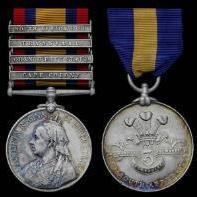
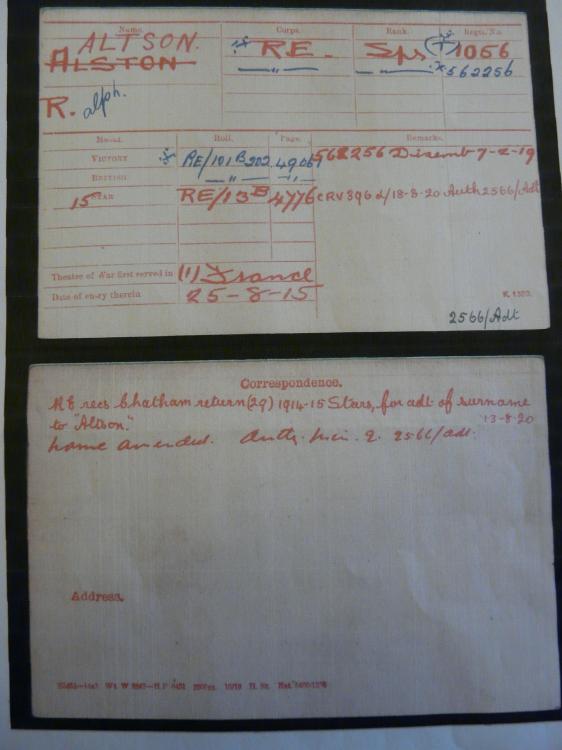
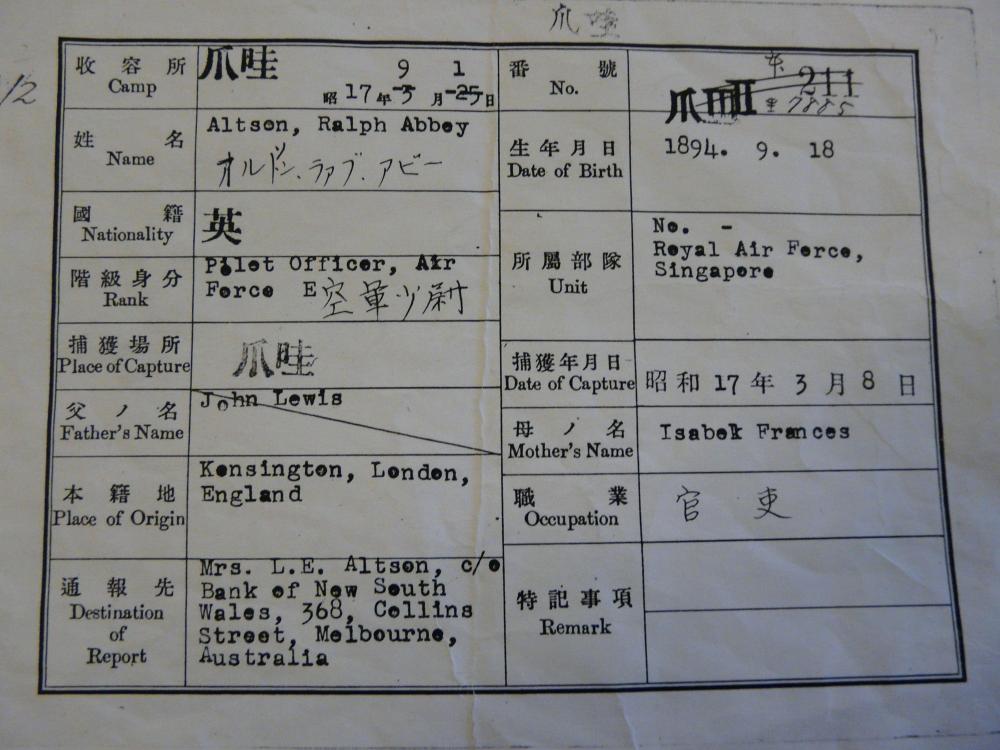
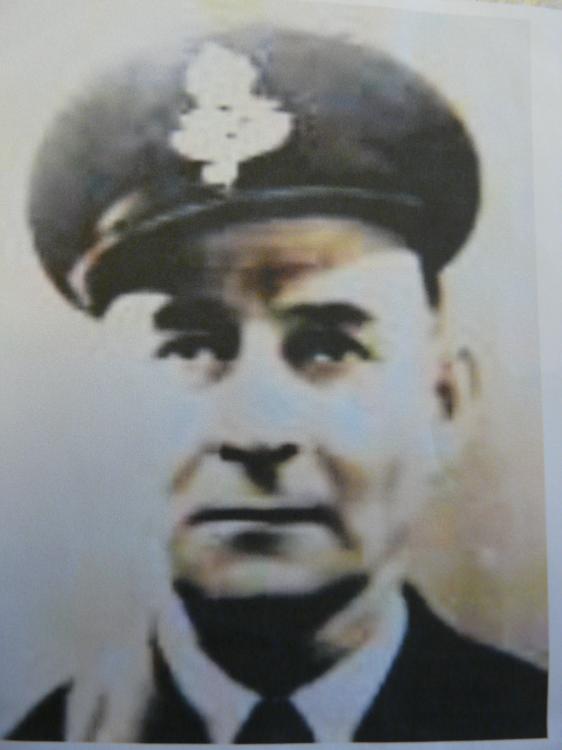
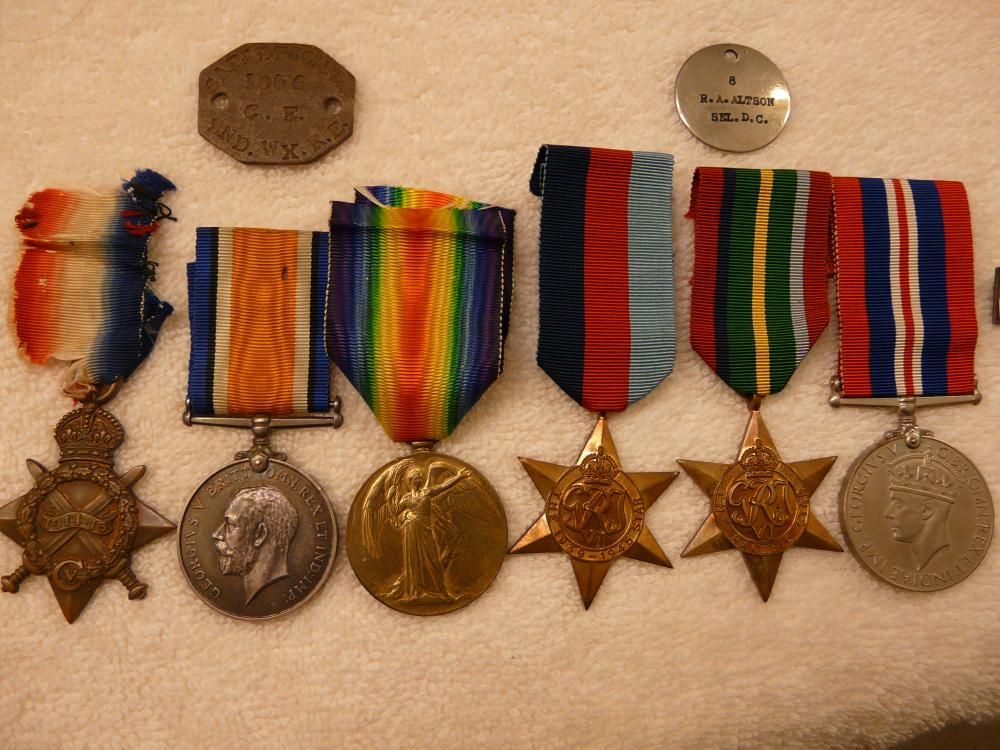
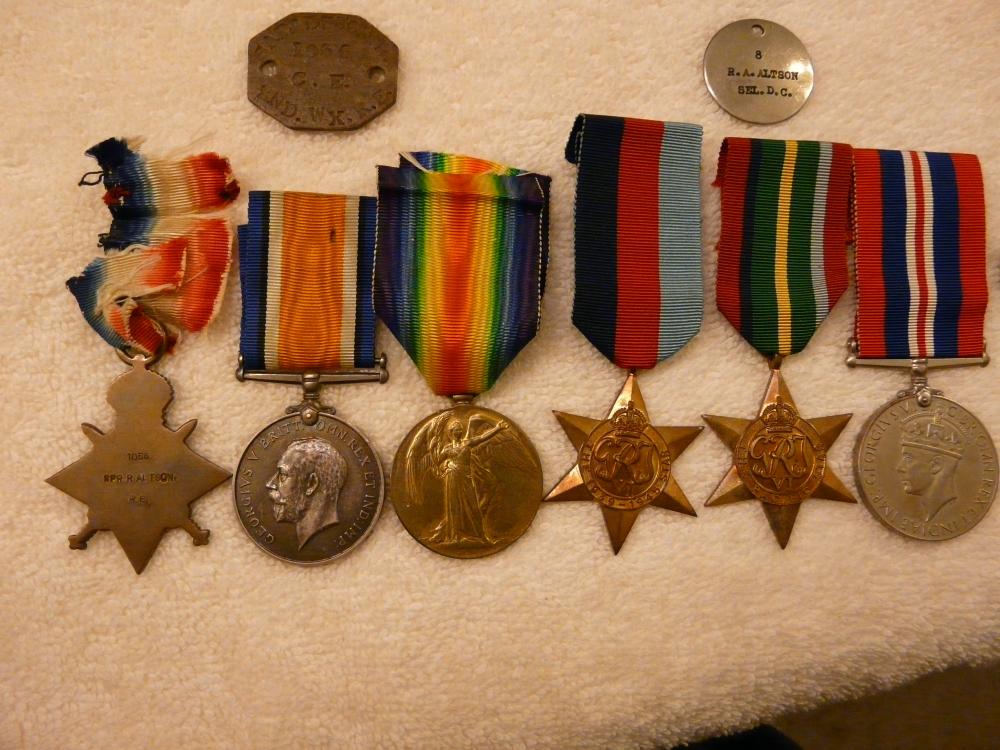
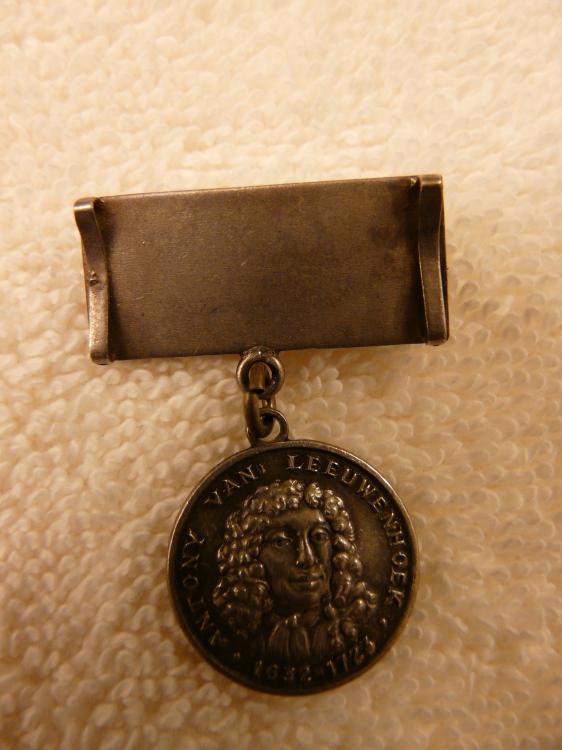
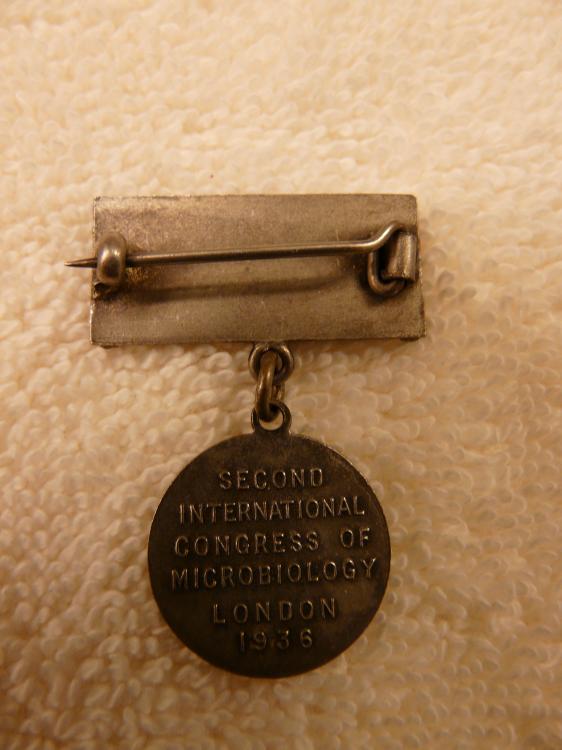
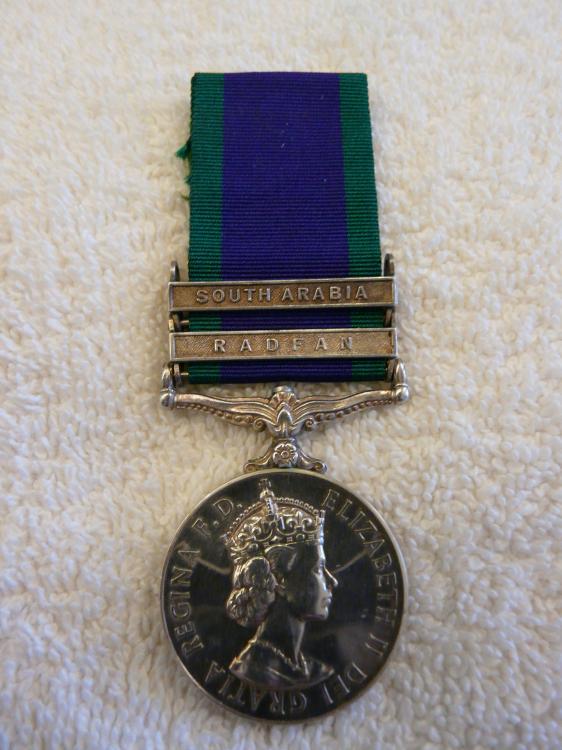

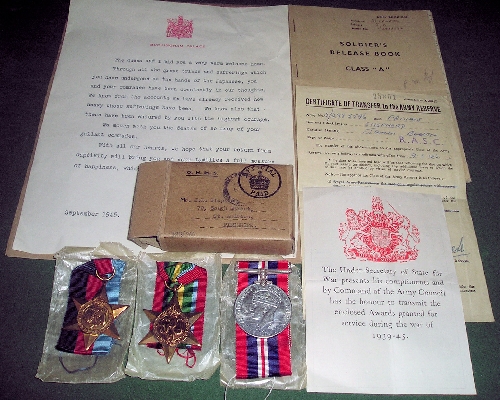
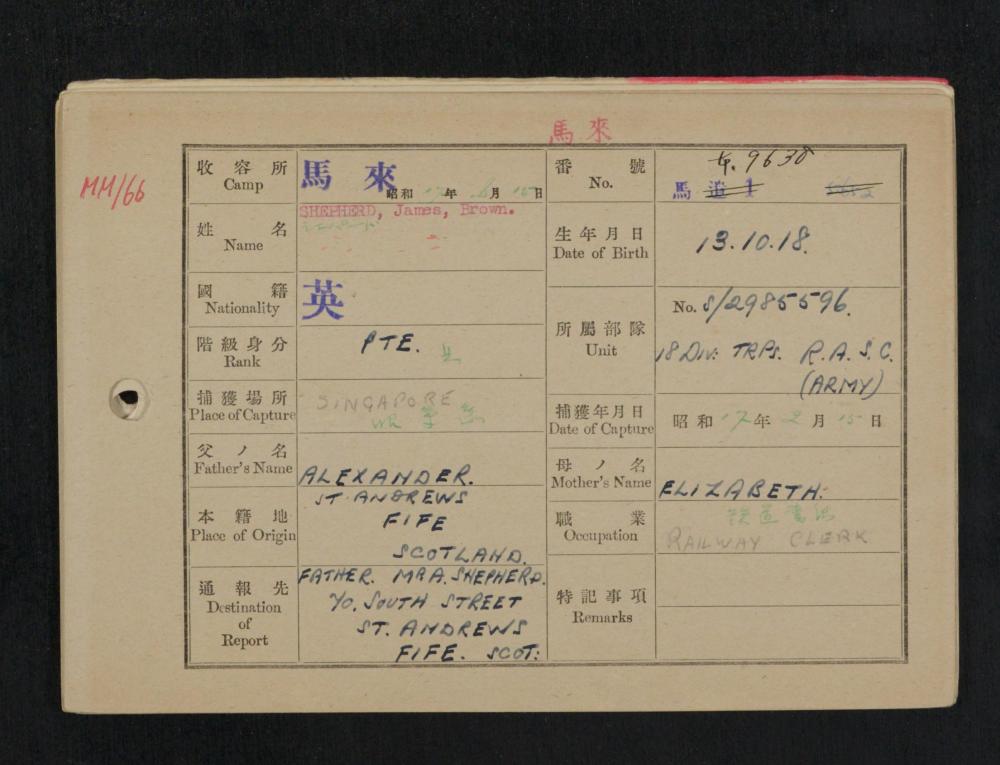
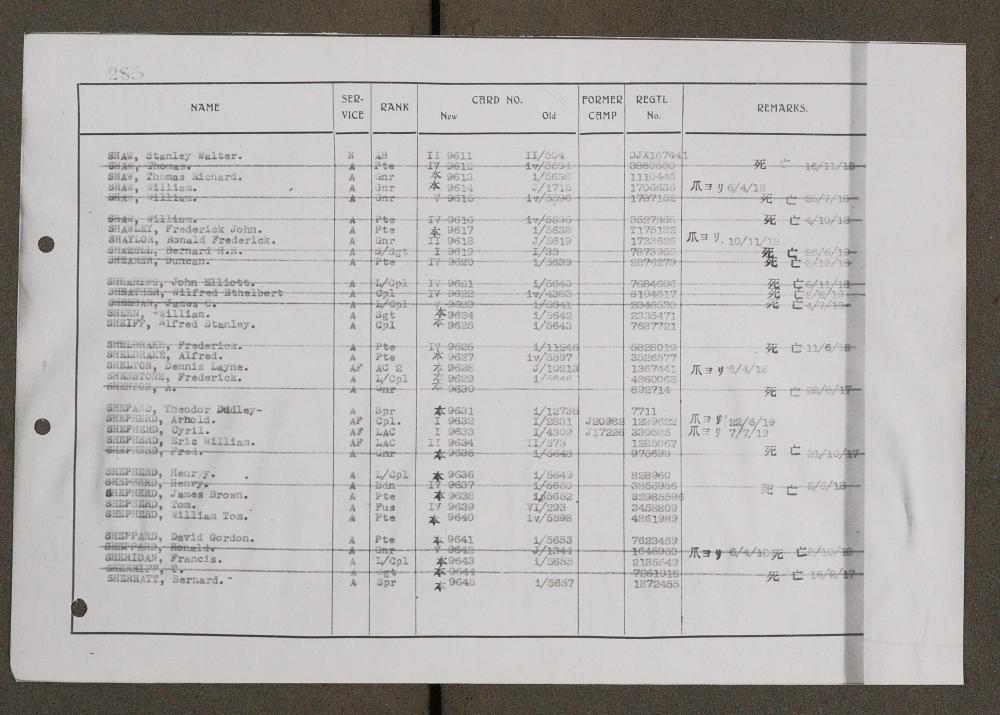
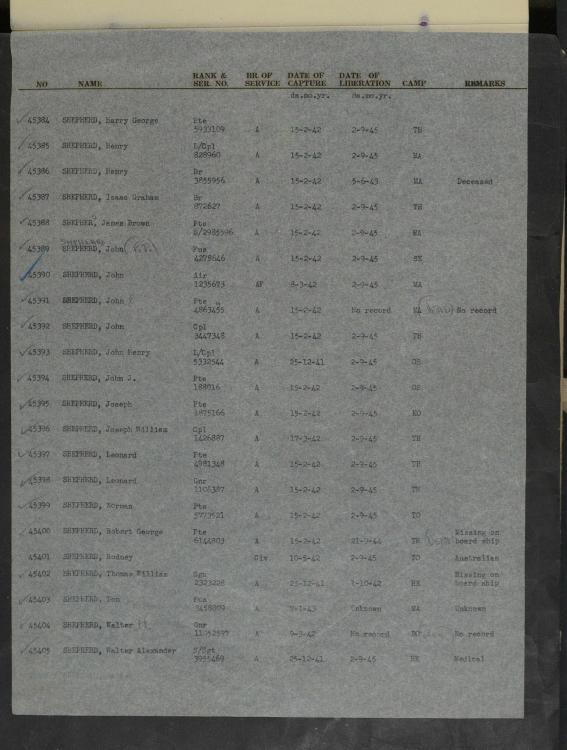
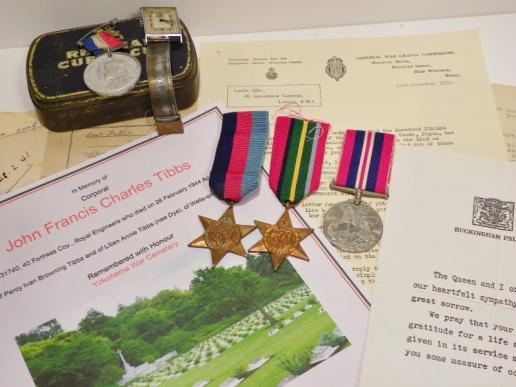



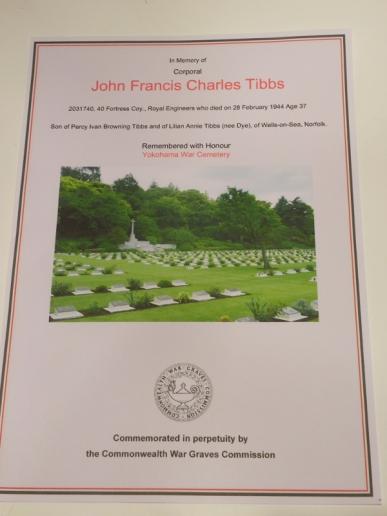

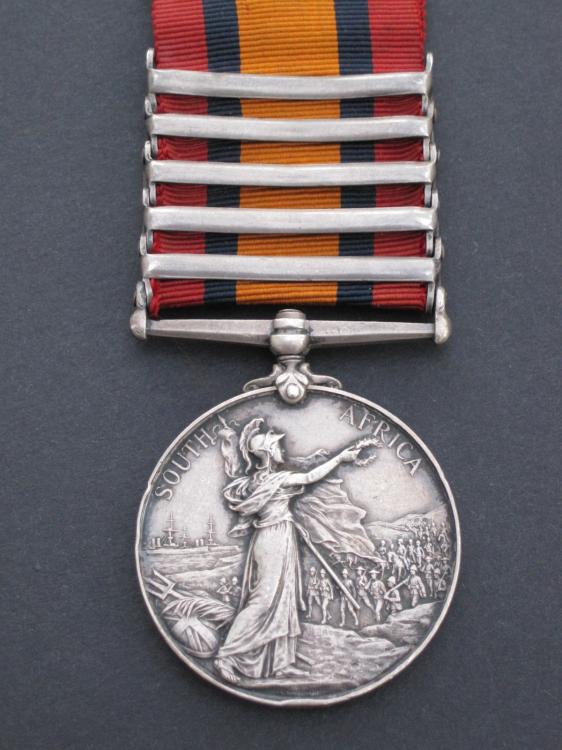
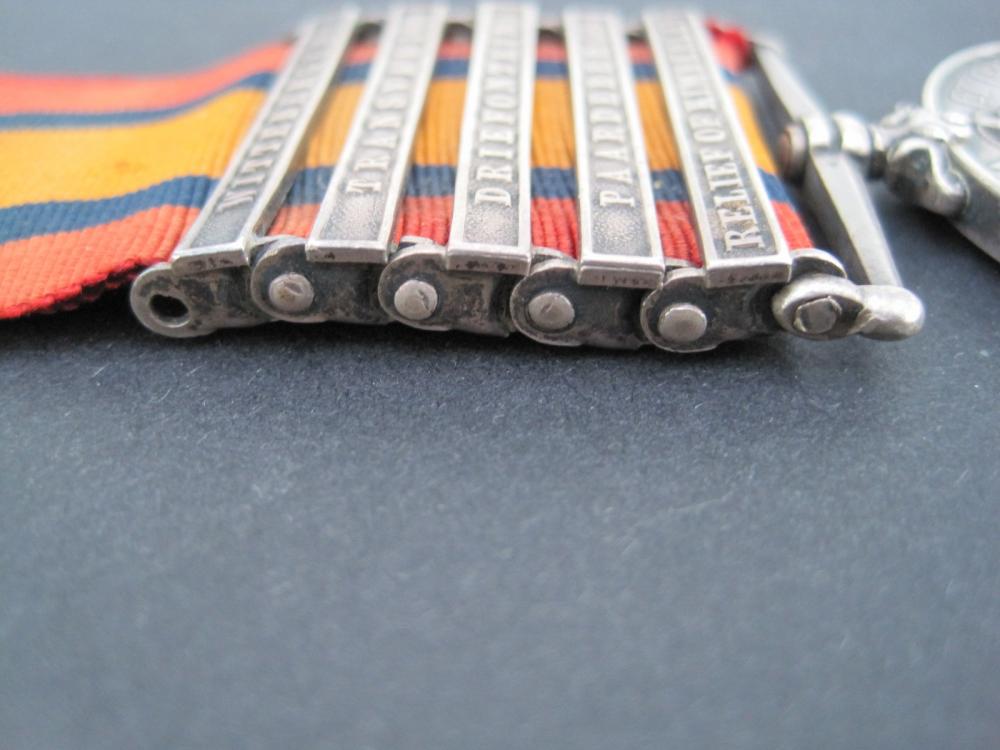
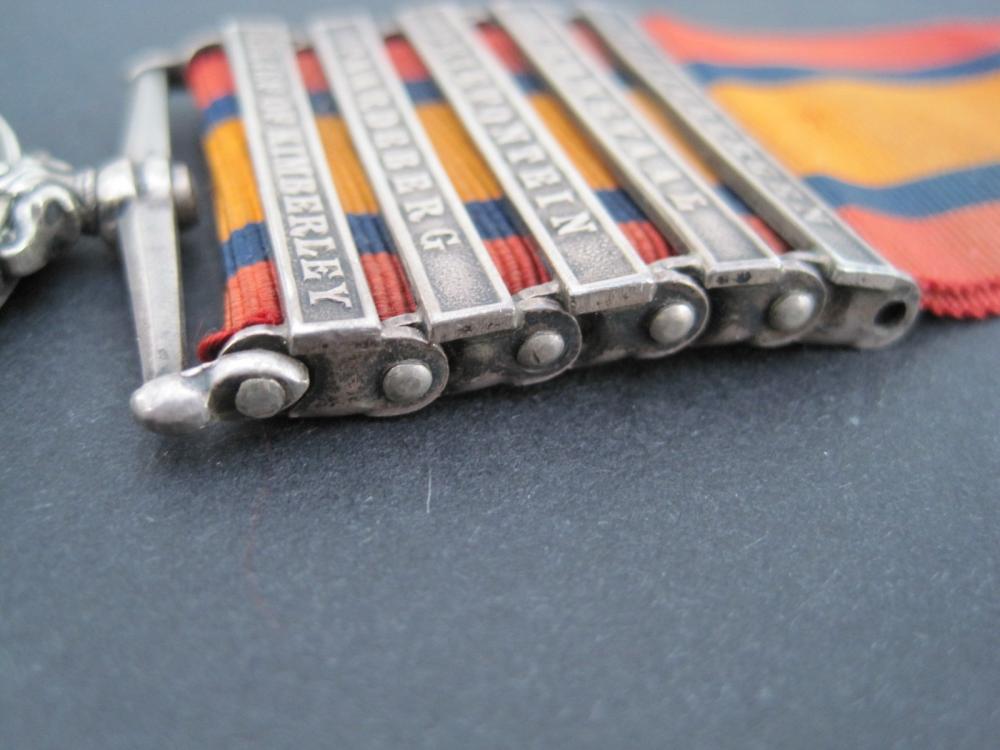
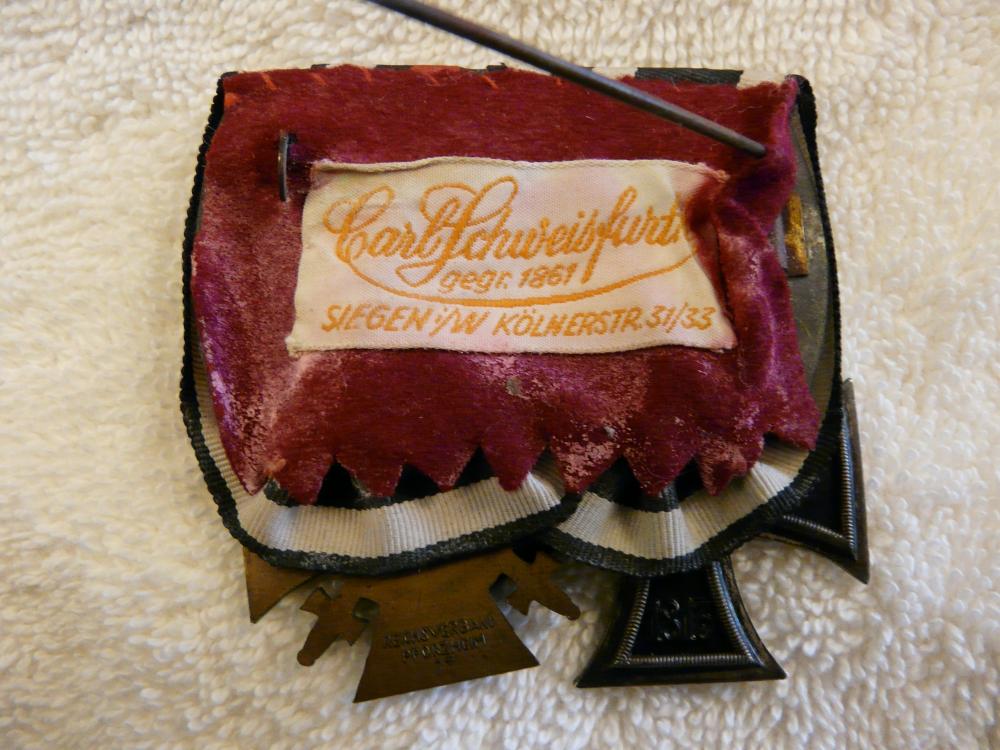
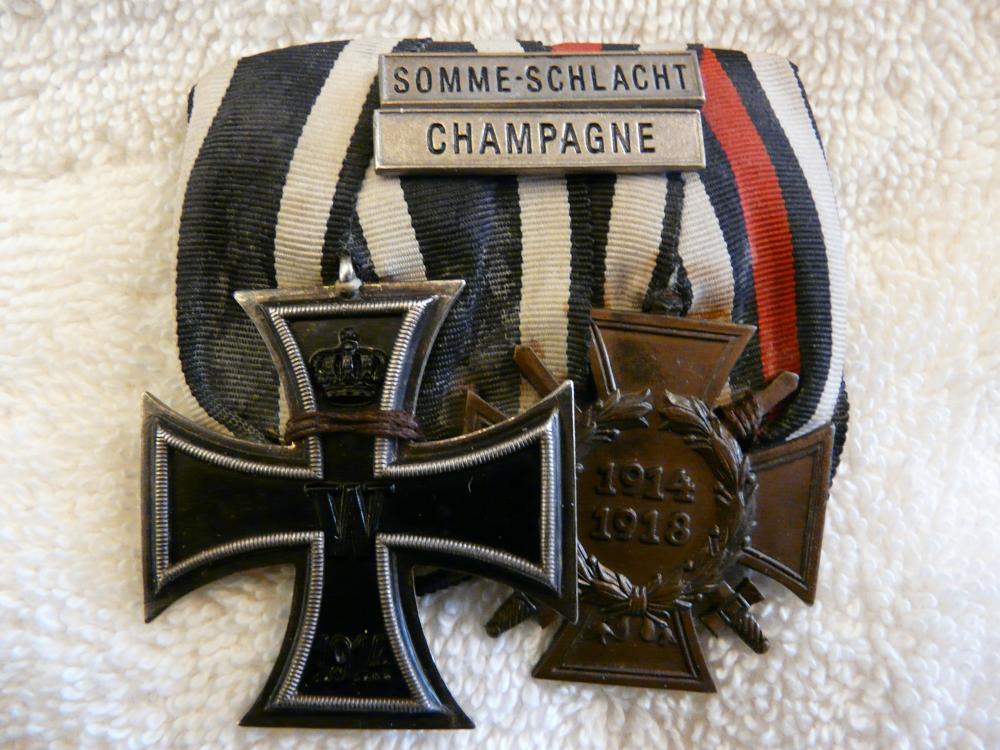

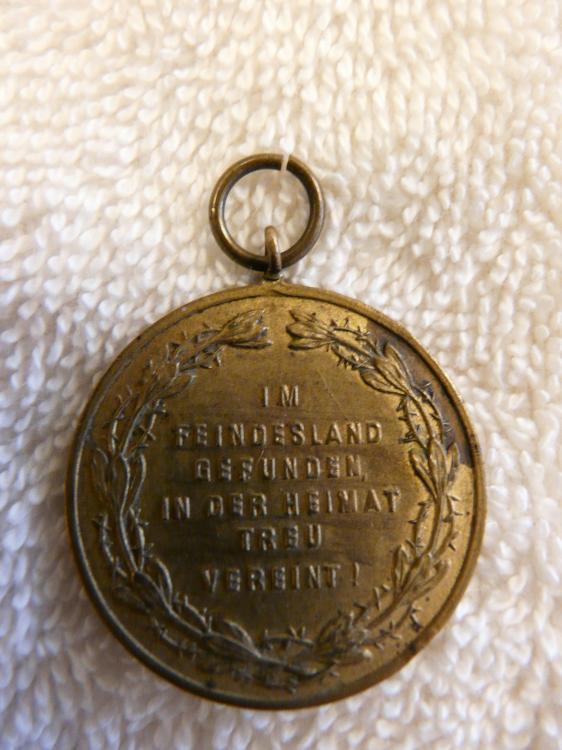
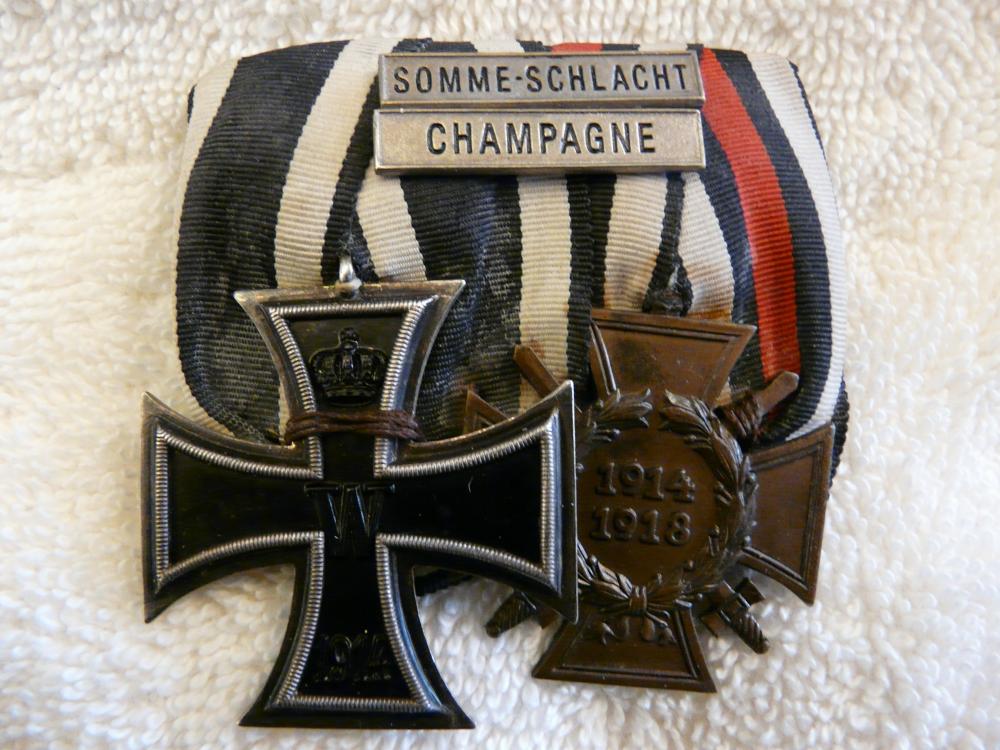
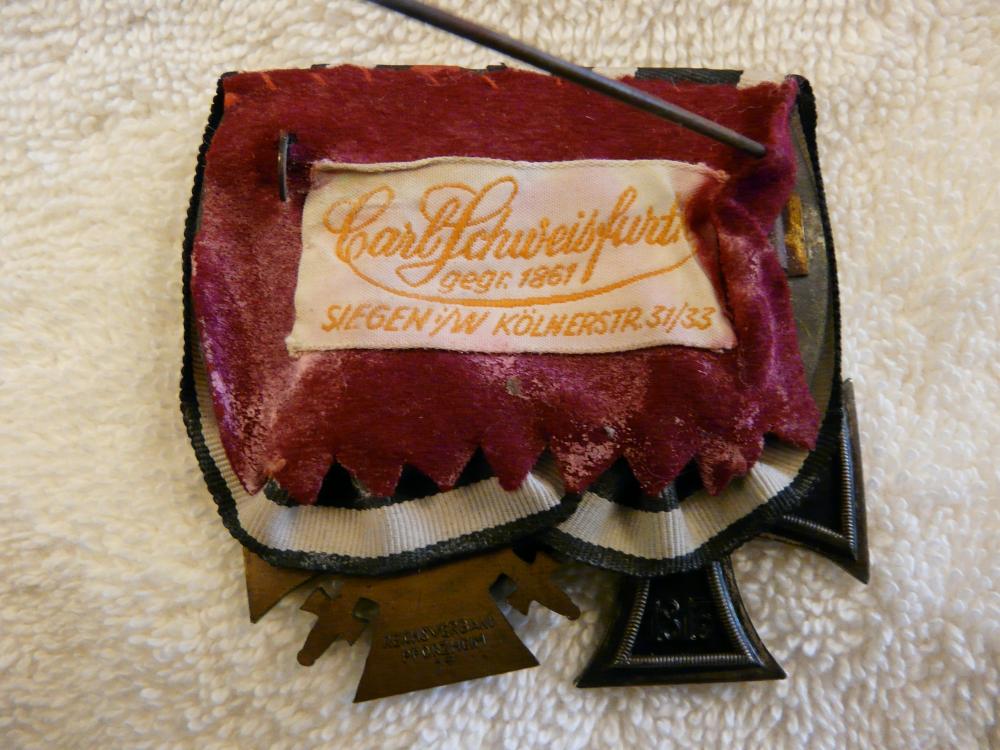
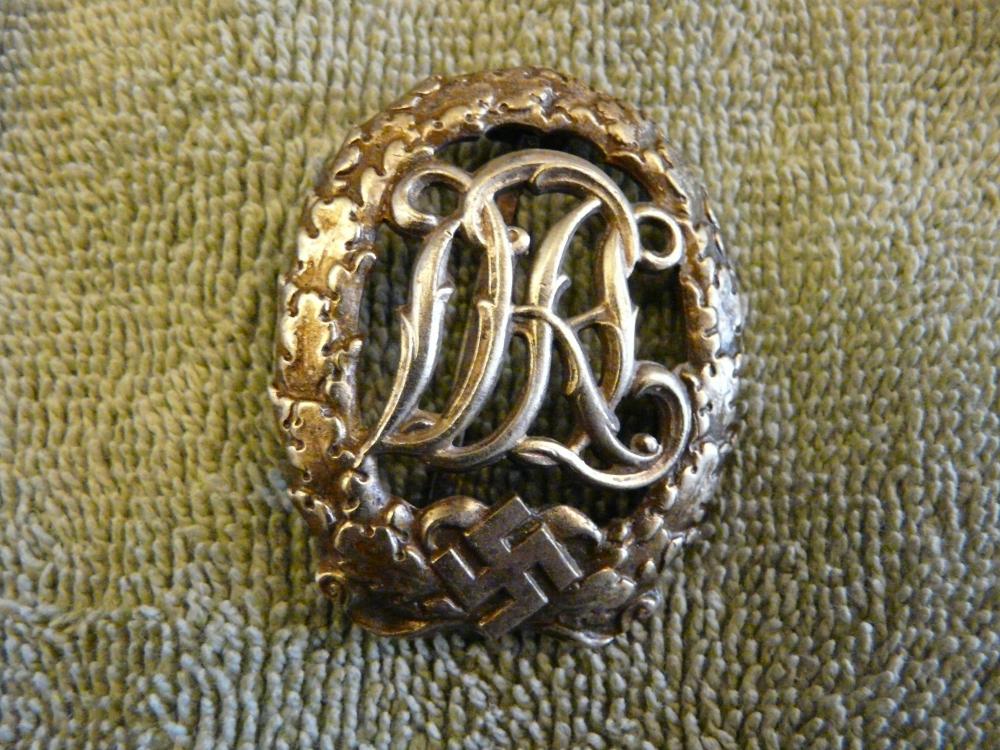
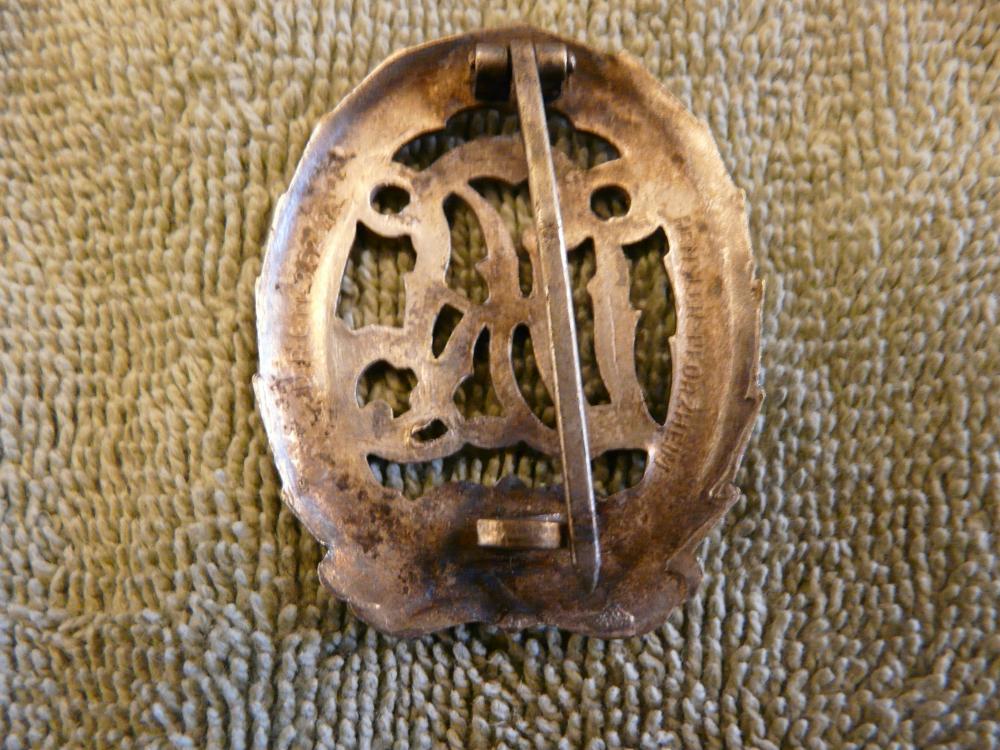
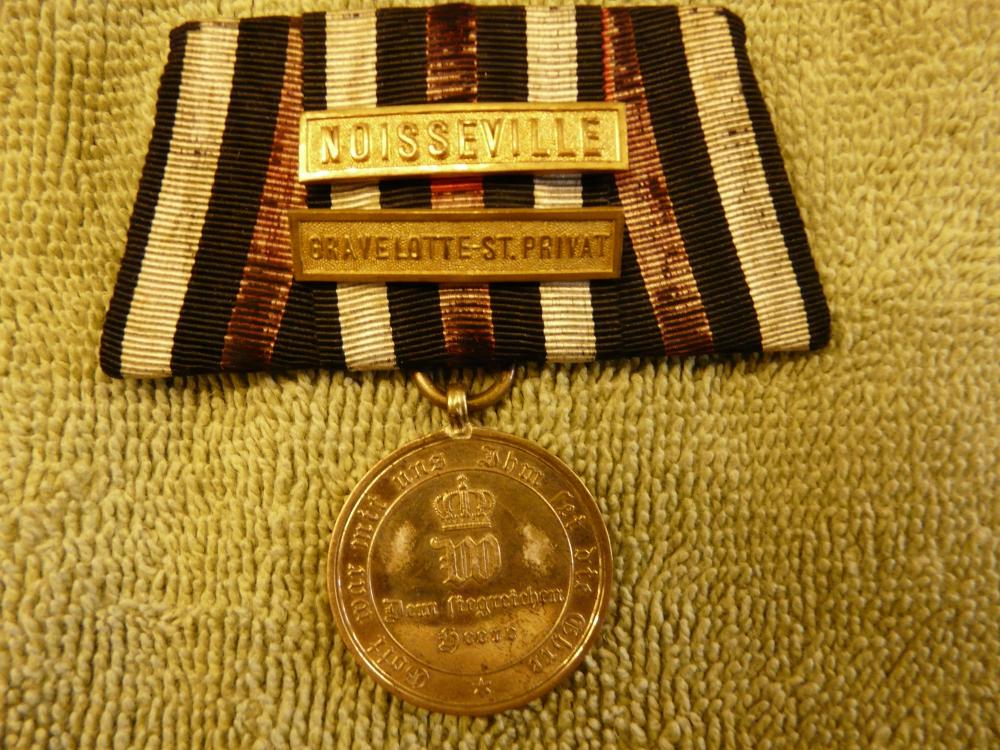
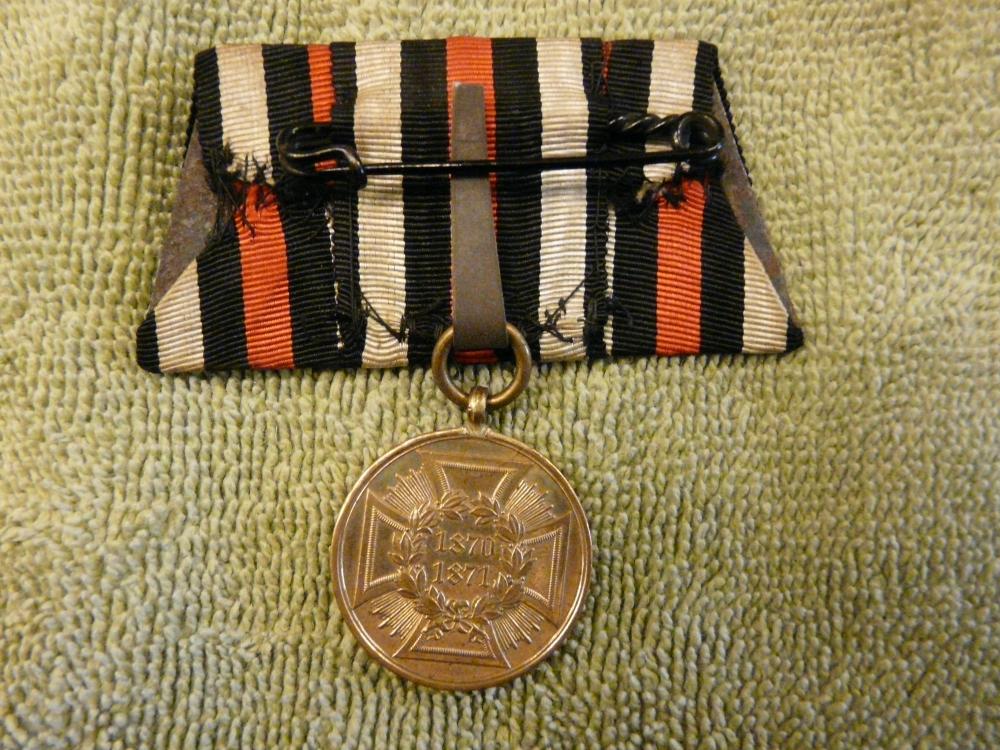
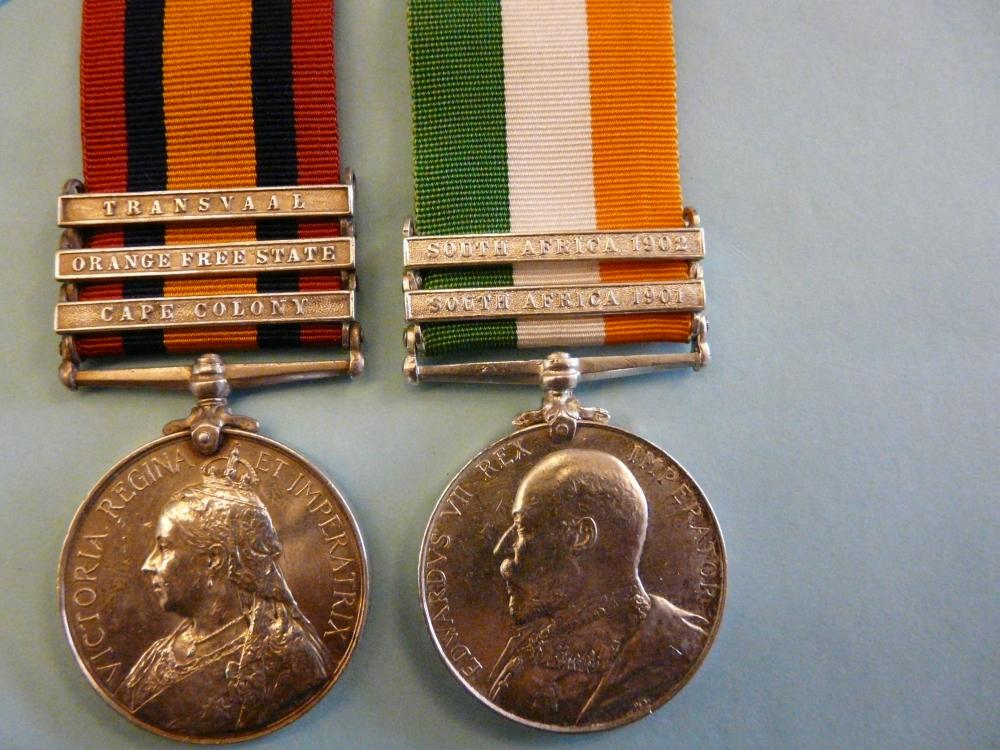
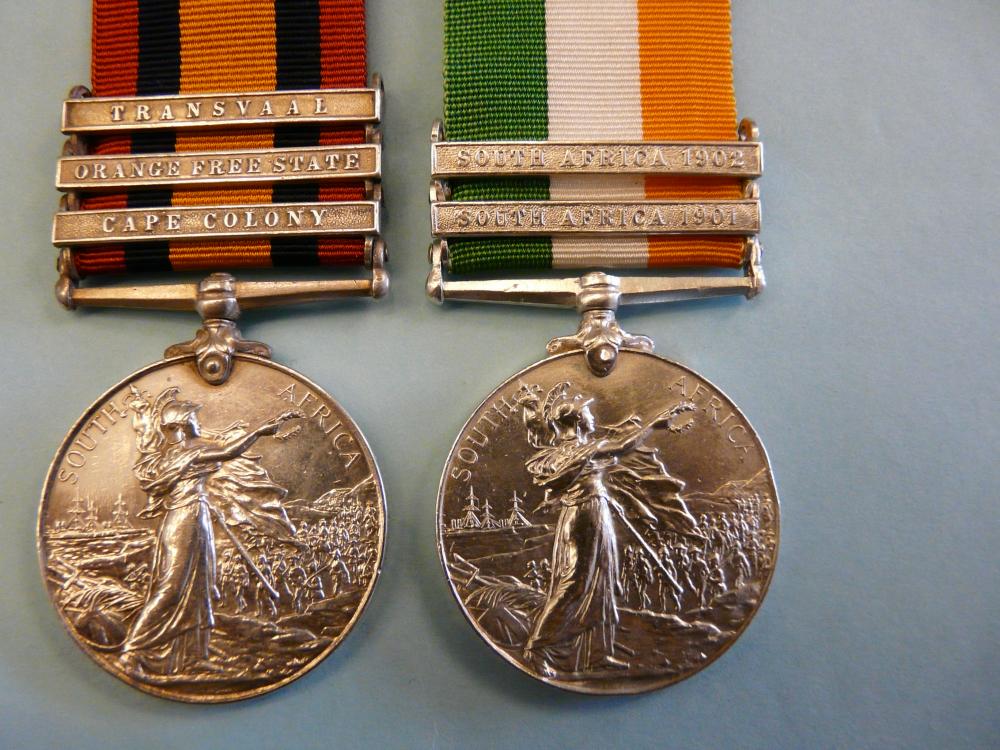
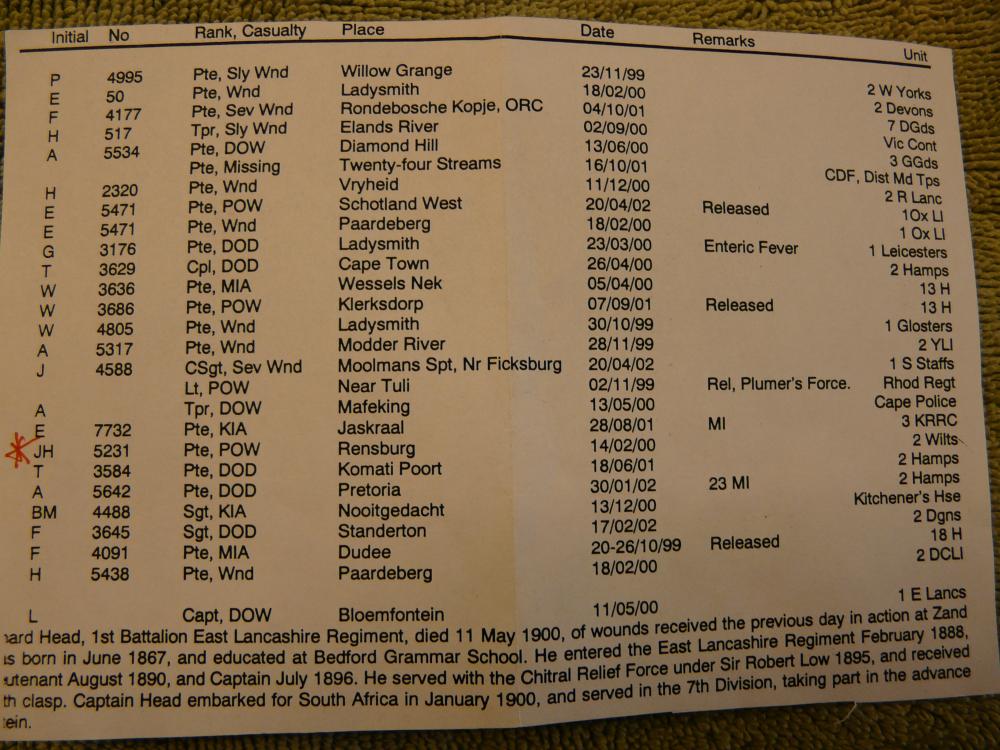
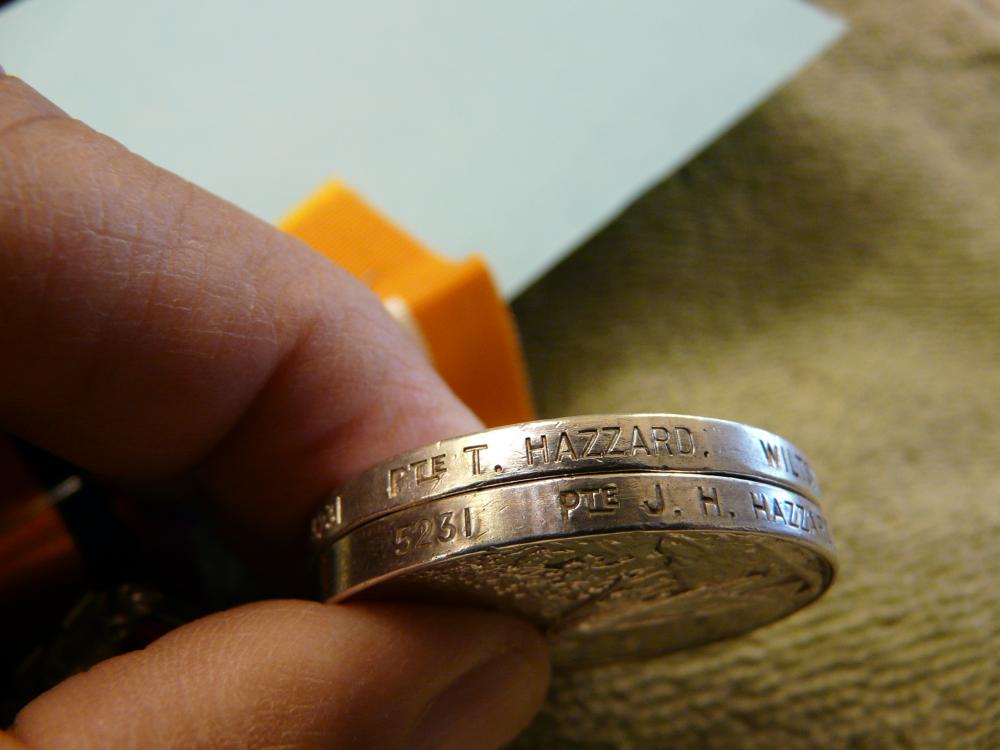



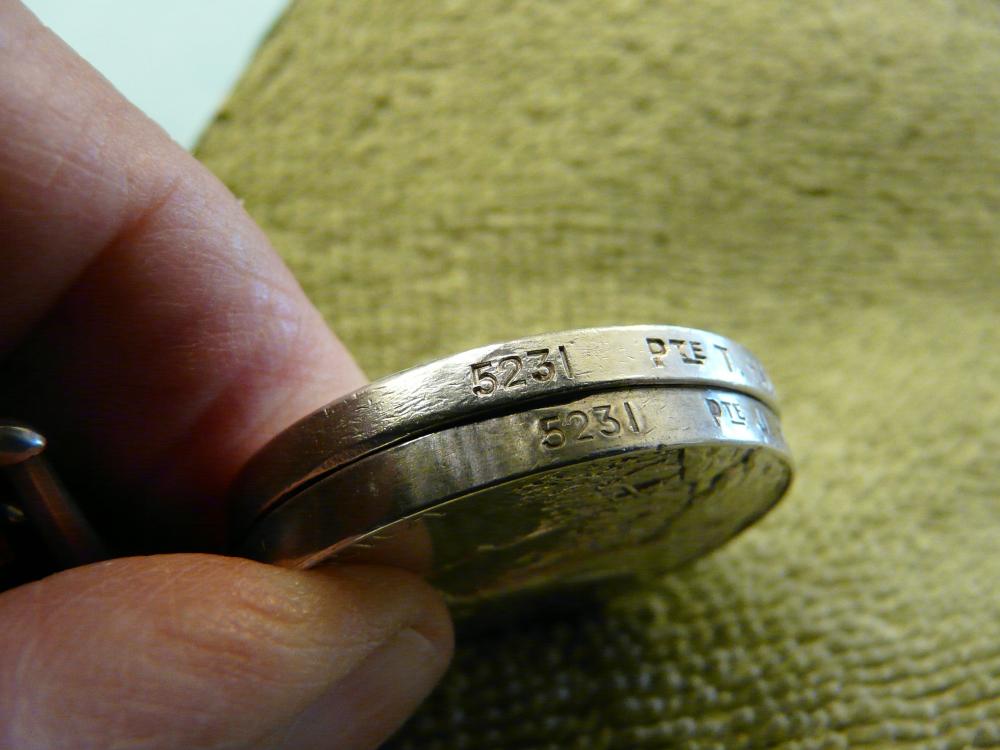
.thumb.jpg.b74fd569b7e14176a4dd74692b864551.jpg)

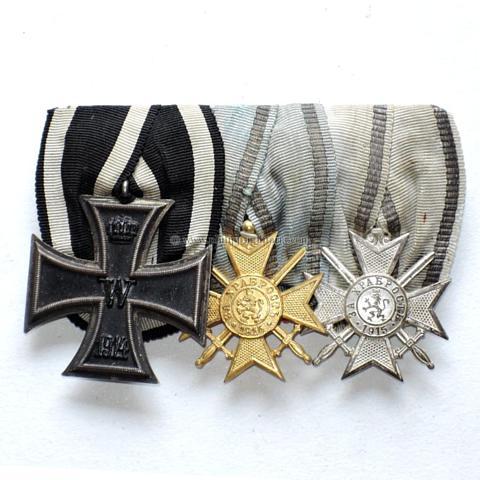

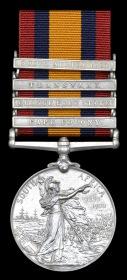
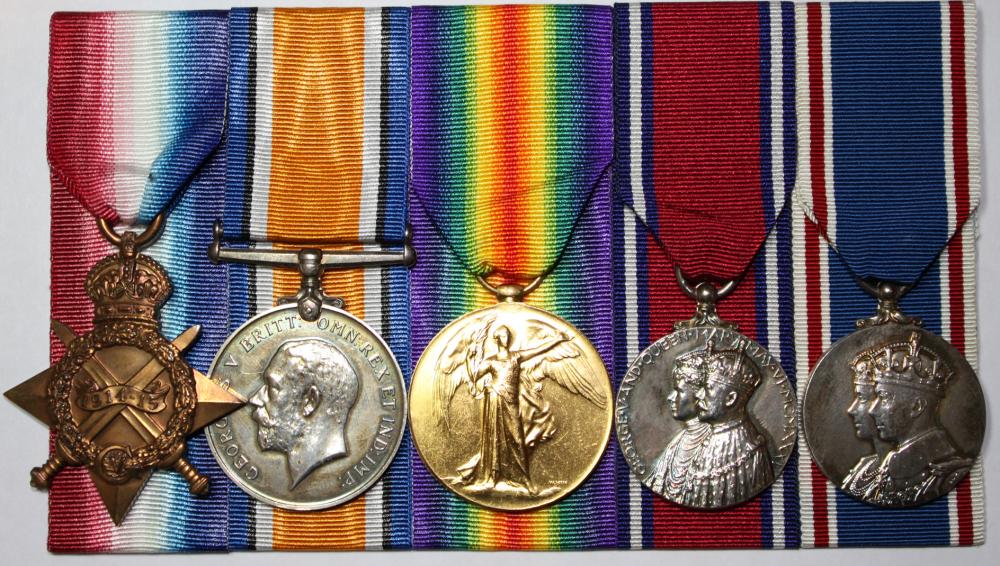
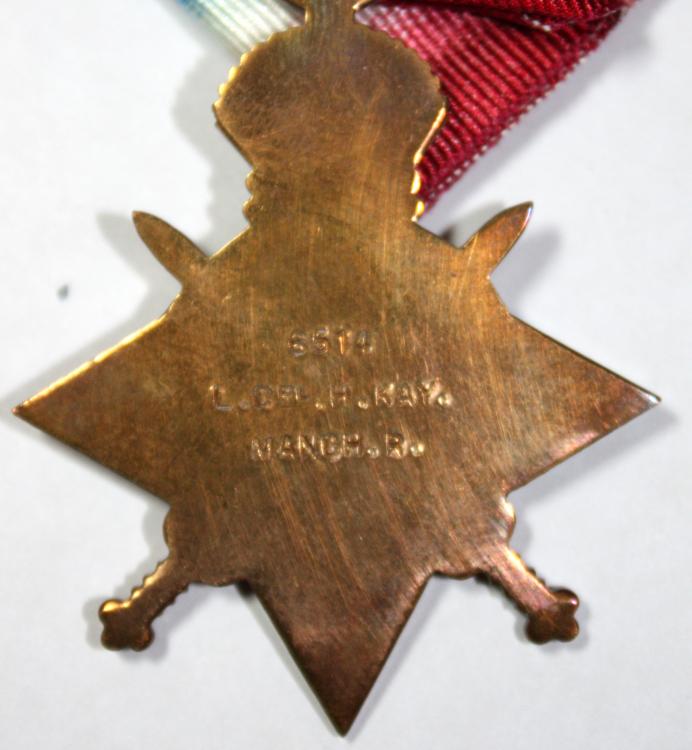

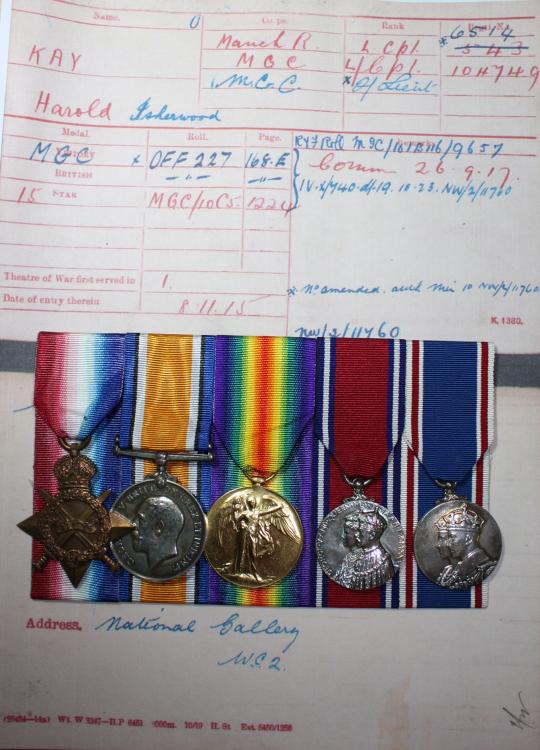

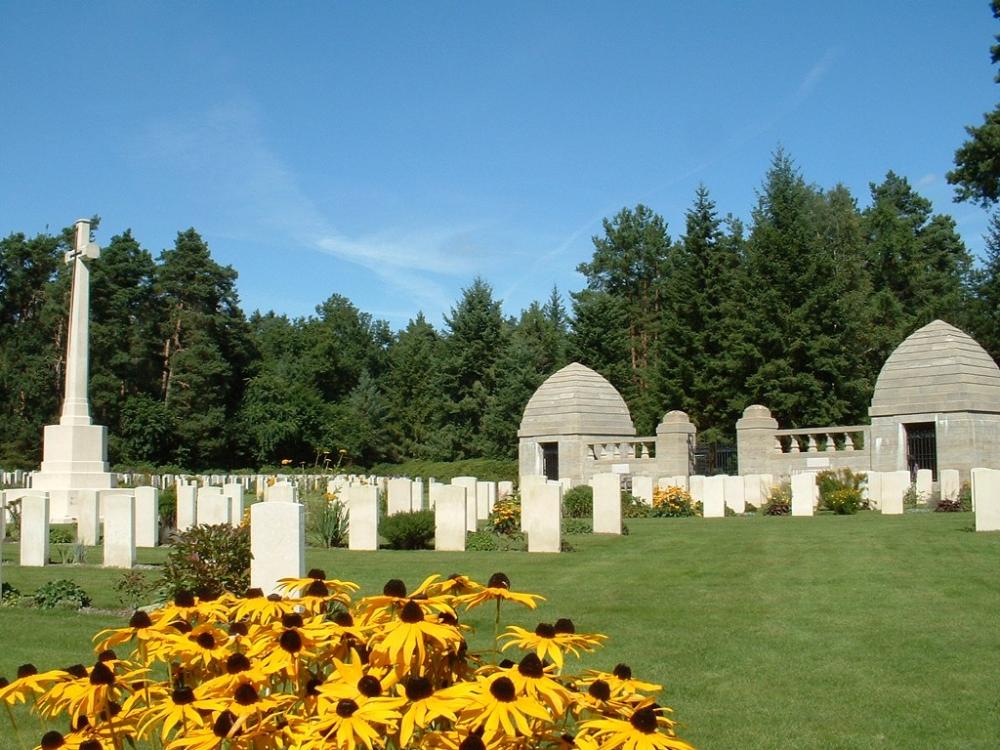
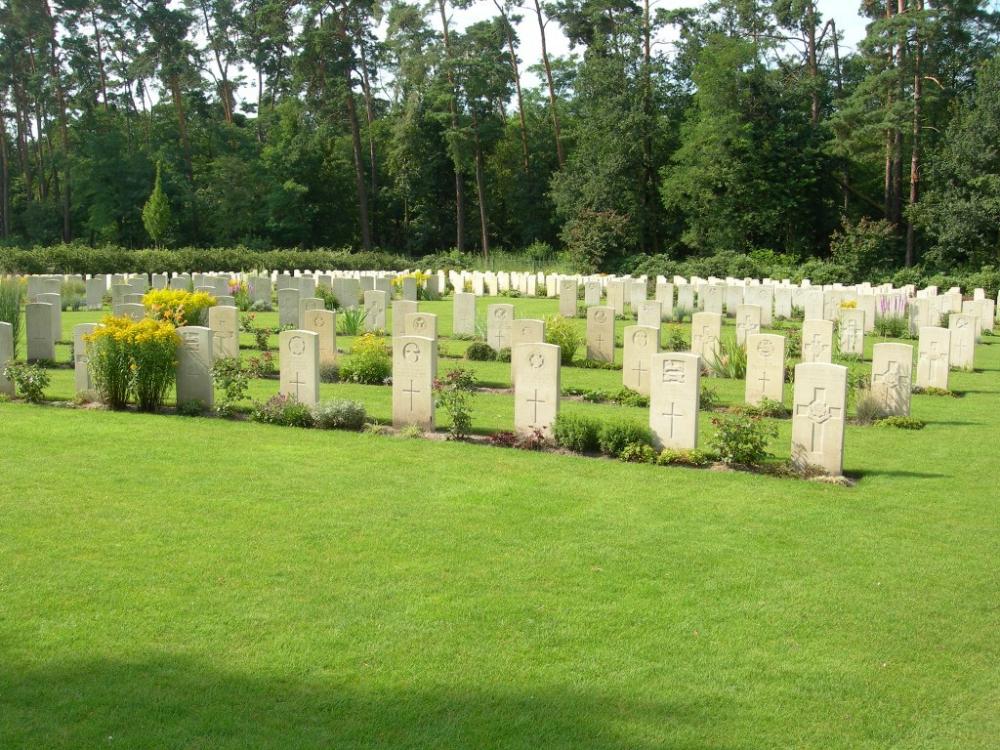
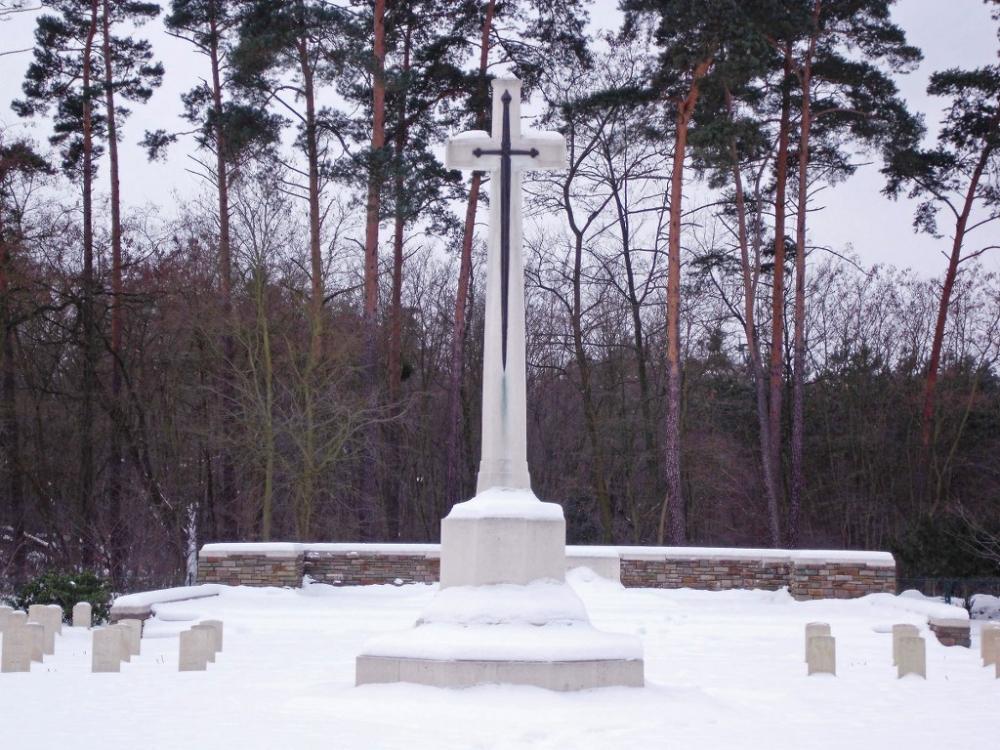

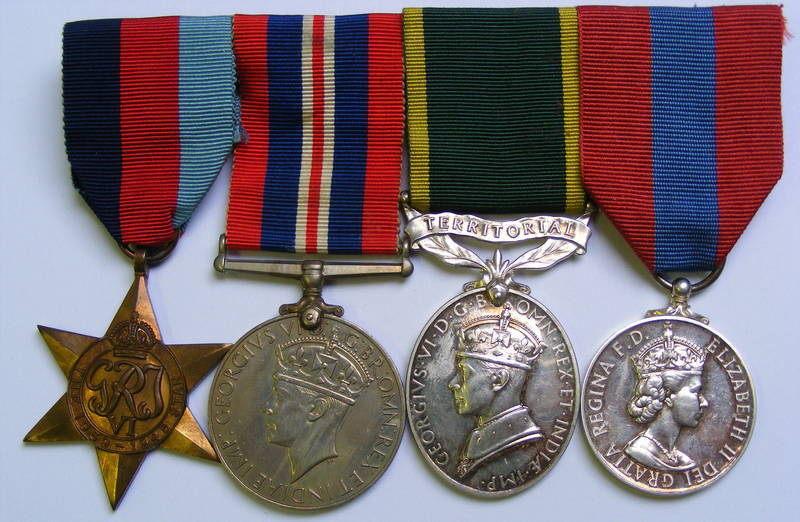
Small collection of POW groups. ** REGIONAL ADMIN. AWARD & CERT. OF MERIT. *A RECOMMENDED POST
in Great Britain: Orders, Gallantry, Campaign Medals
Posted
Hi Tony,
Other than the LGs of May and June 1942, I don't have any specifics on his WWII medals. They're just the "common" ones given to all. It has always bewildered me how PoWs were given so few medals and so little when they suffered so much. Yes, we all know the rules, but it seems like they should have been recognized; perhaps with something like the US has done, a PoW medal.